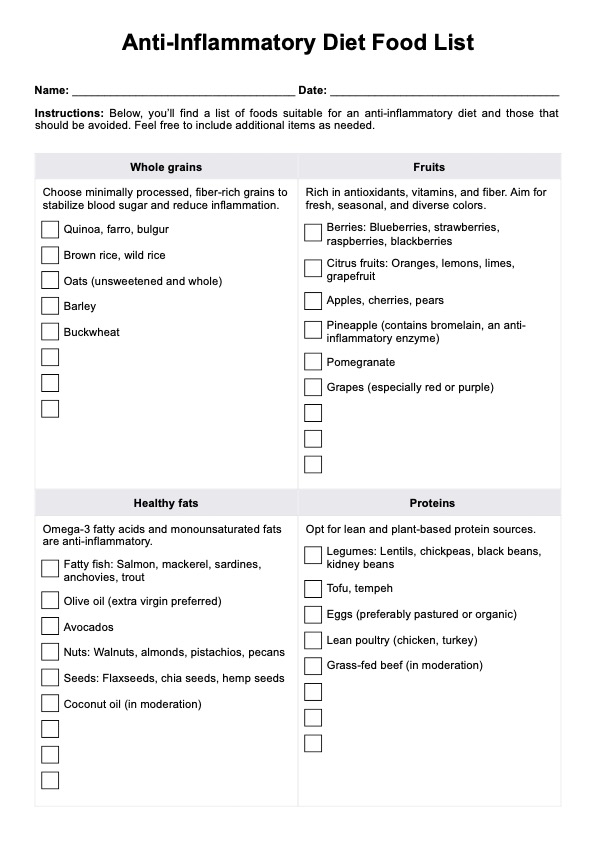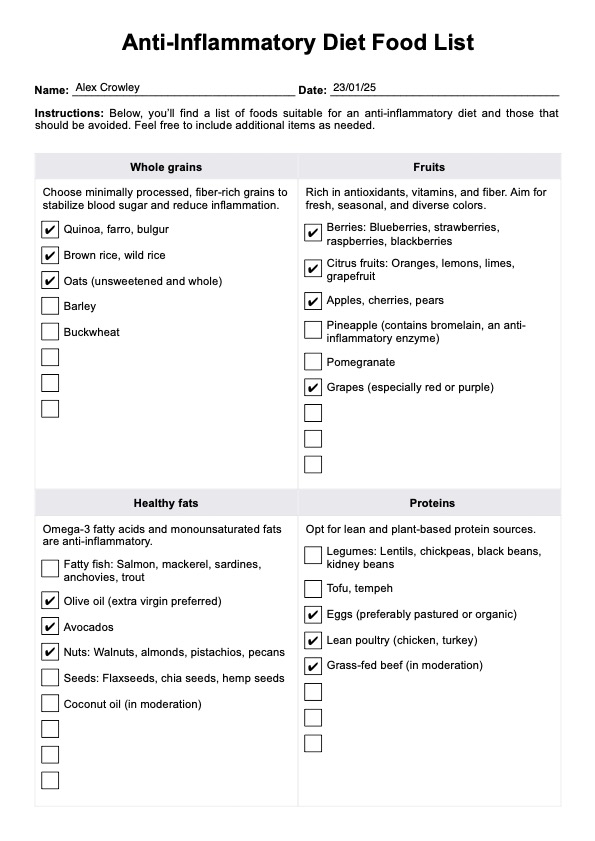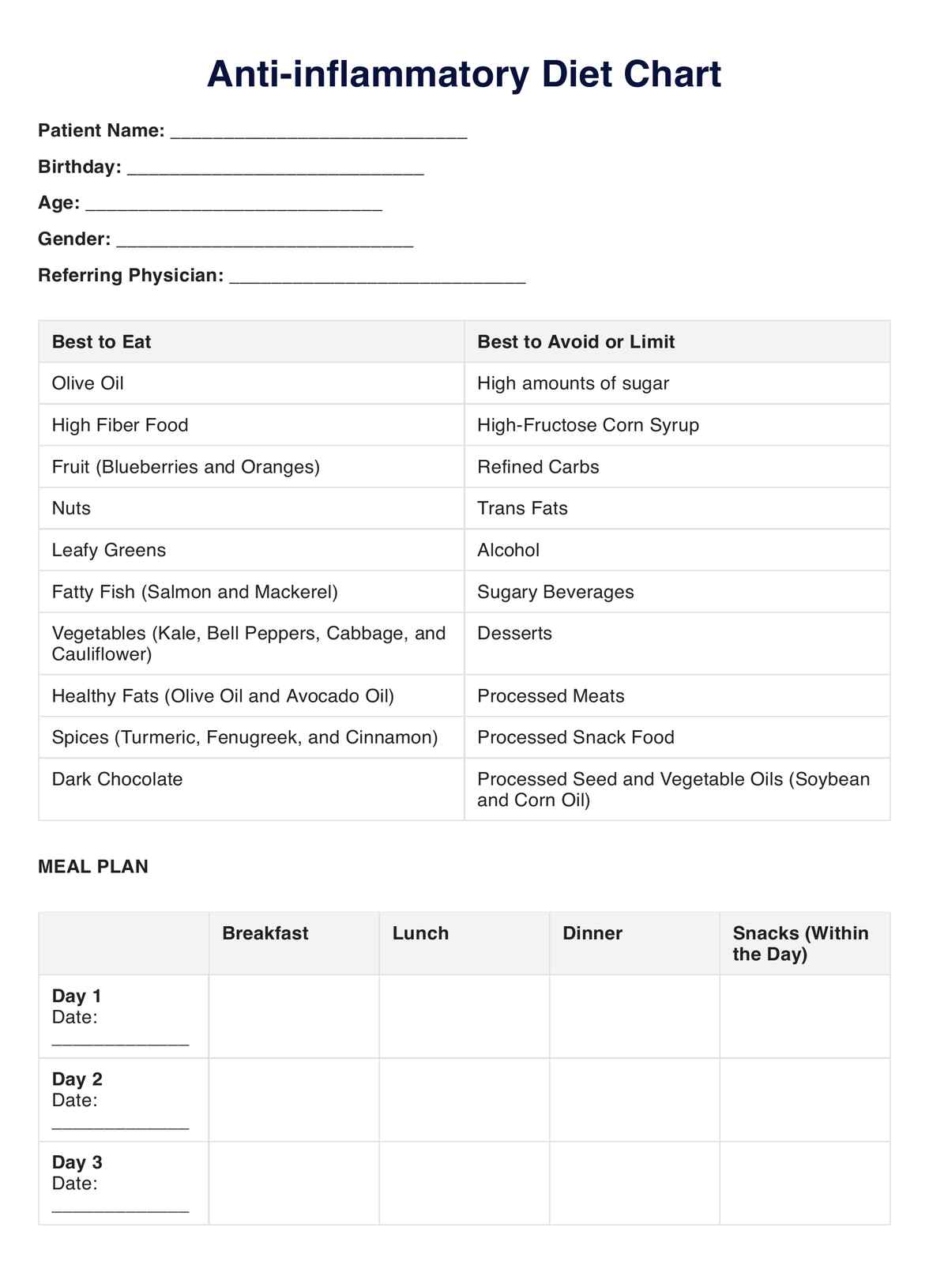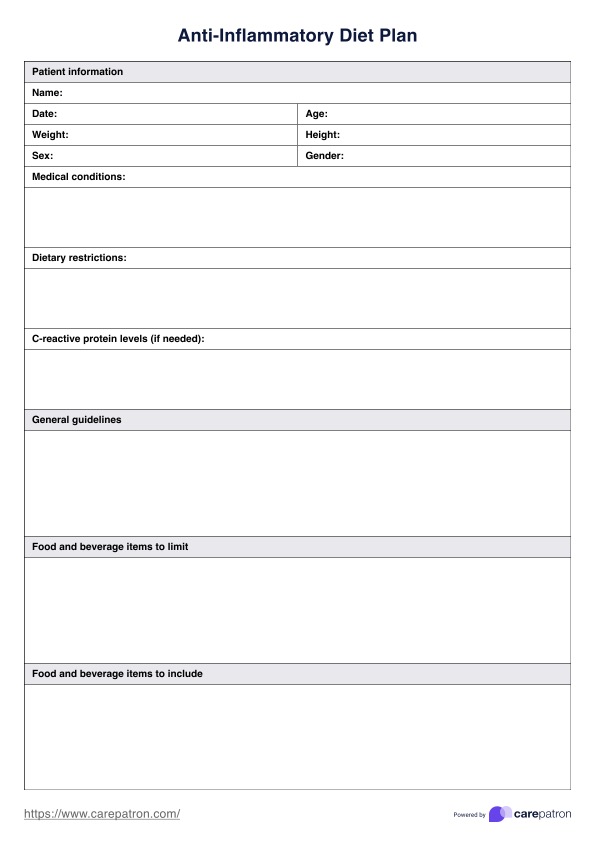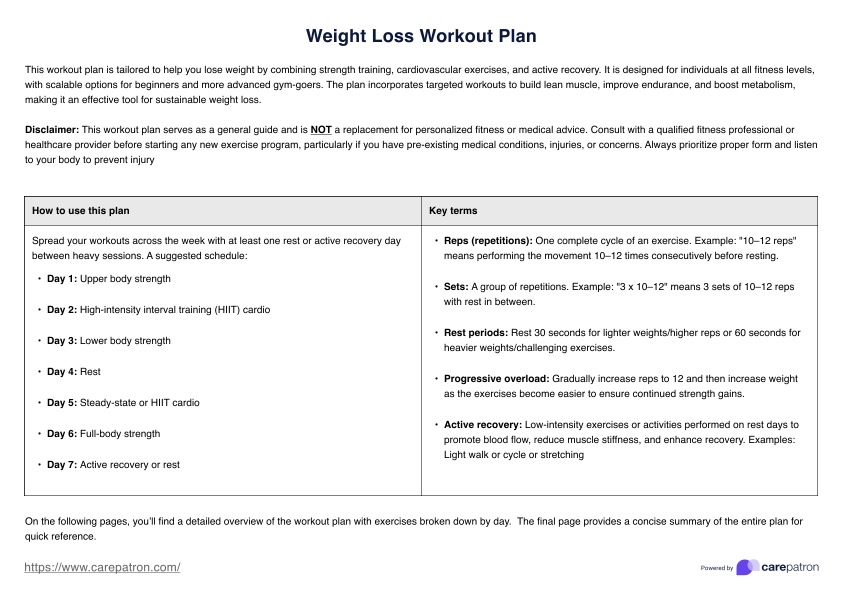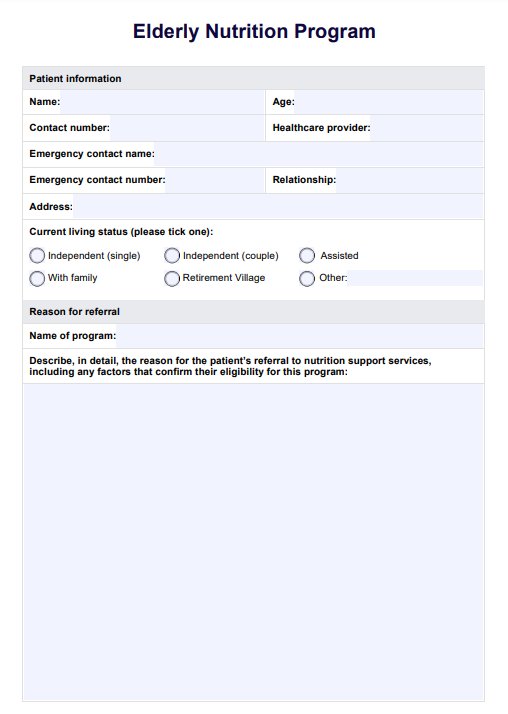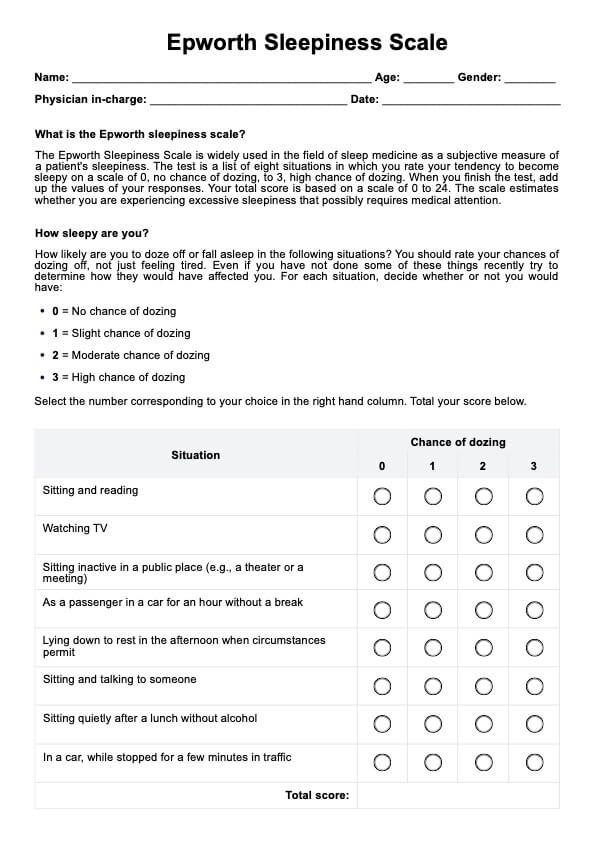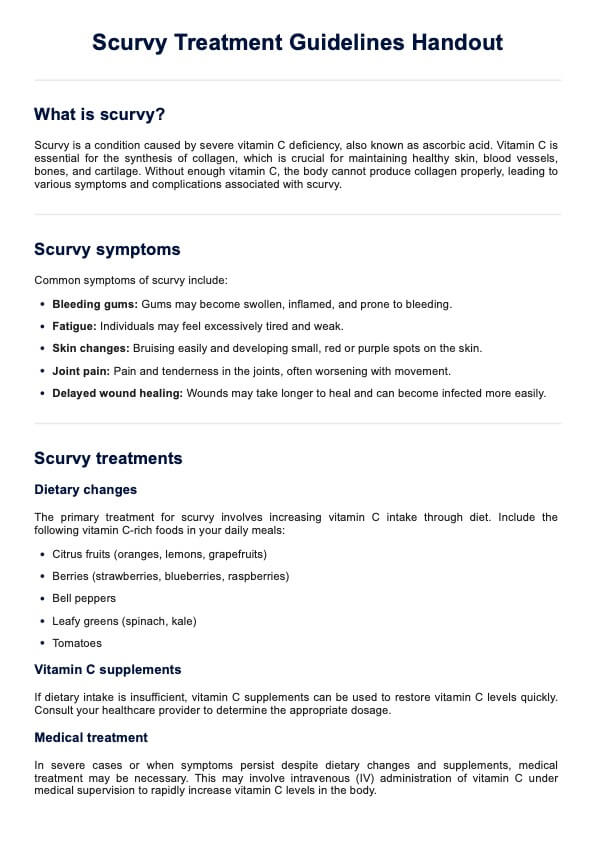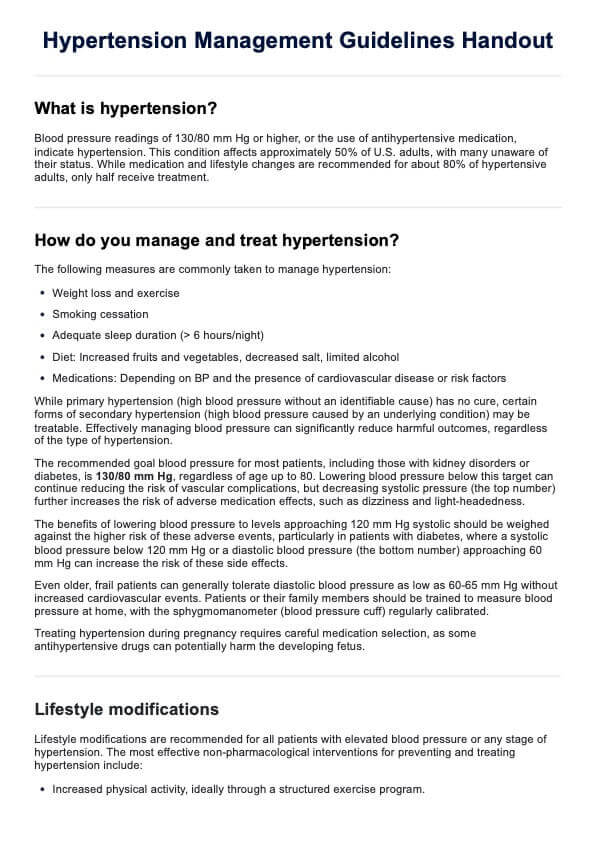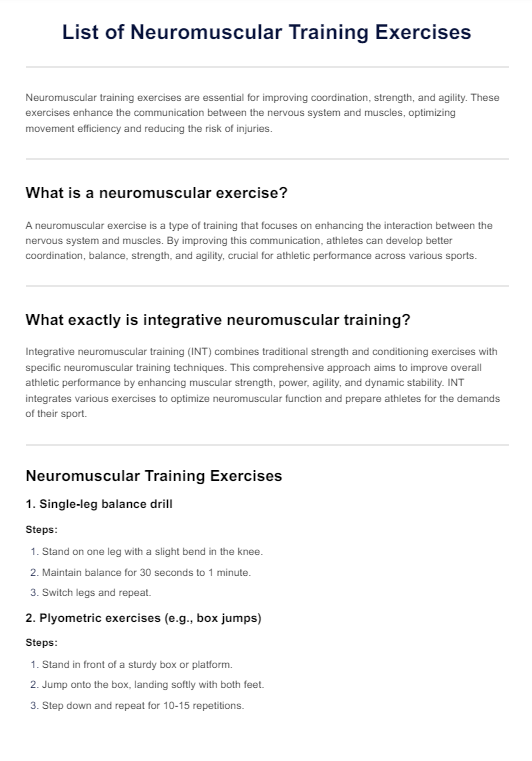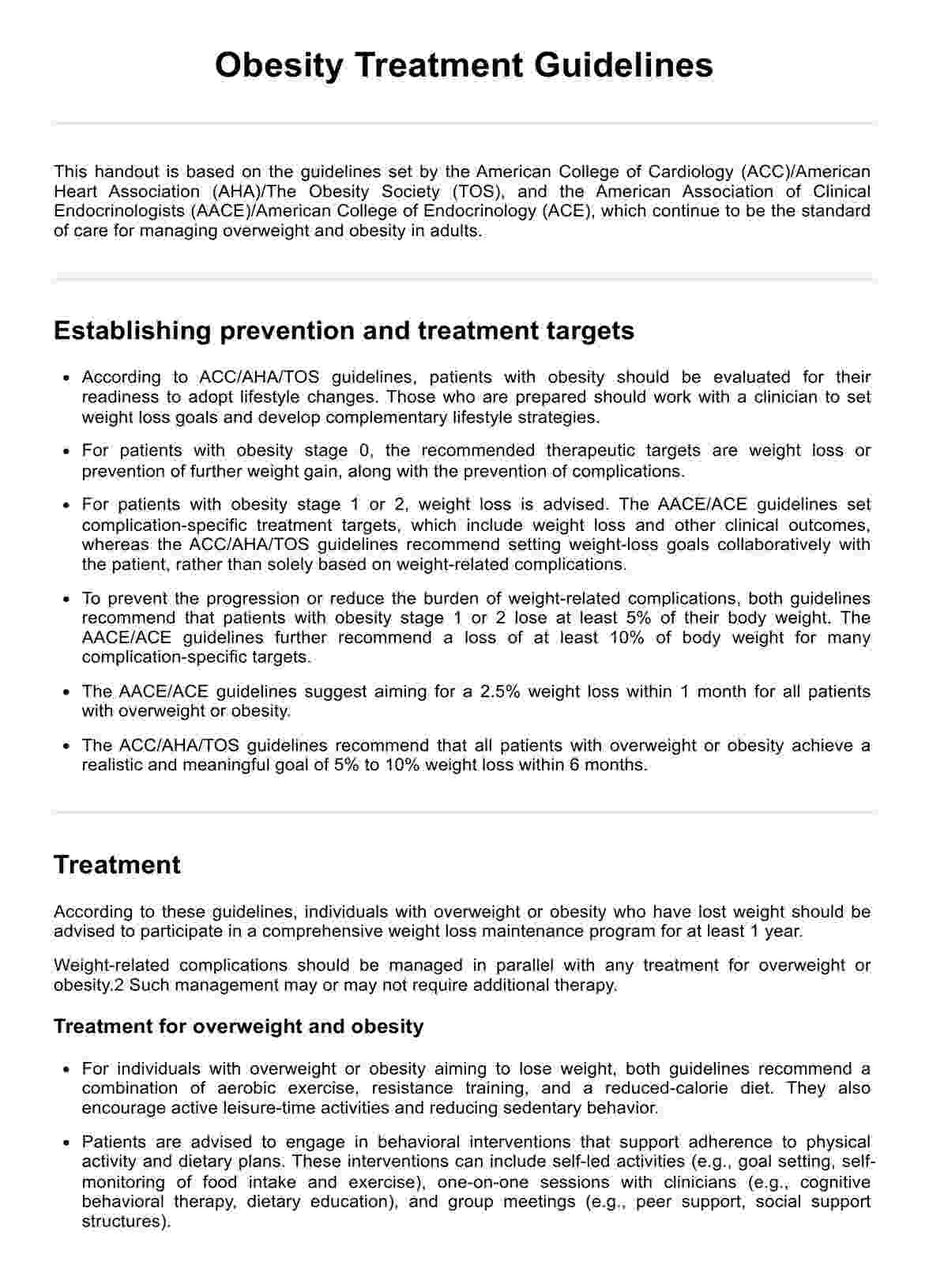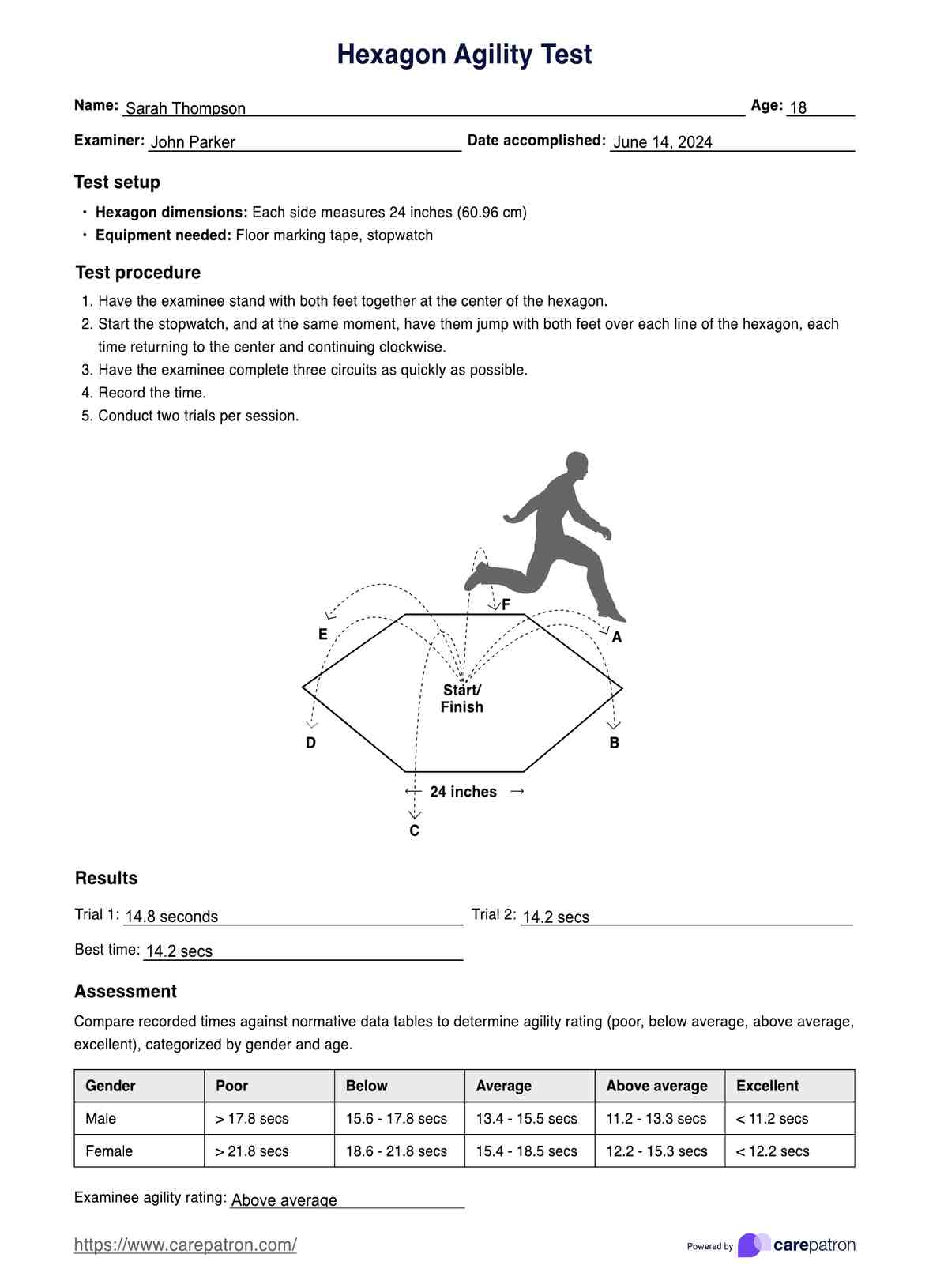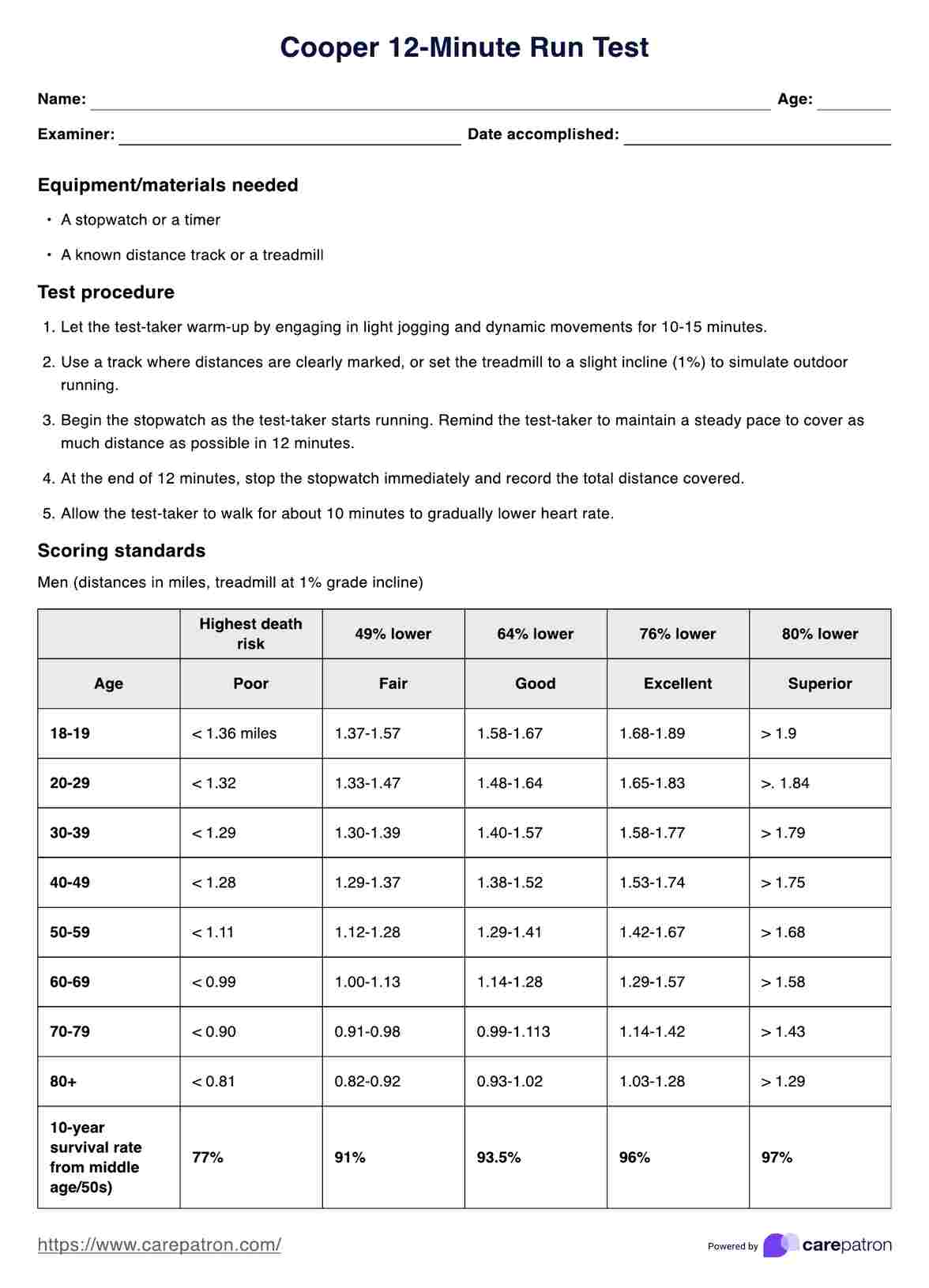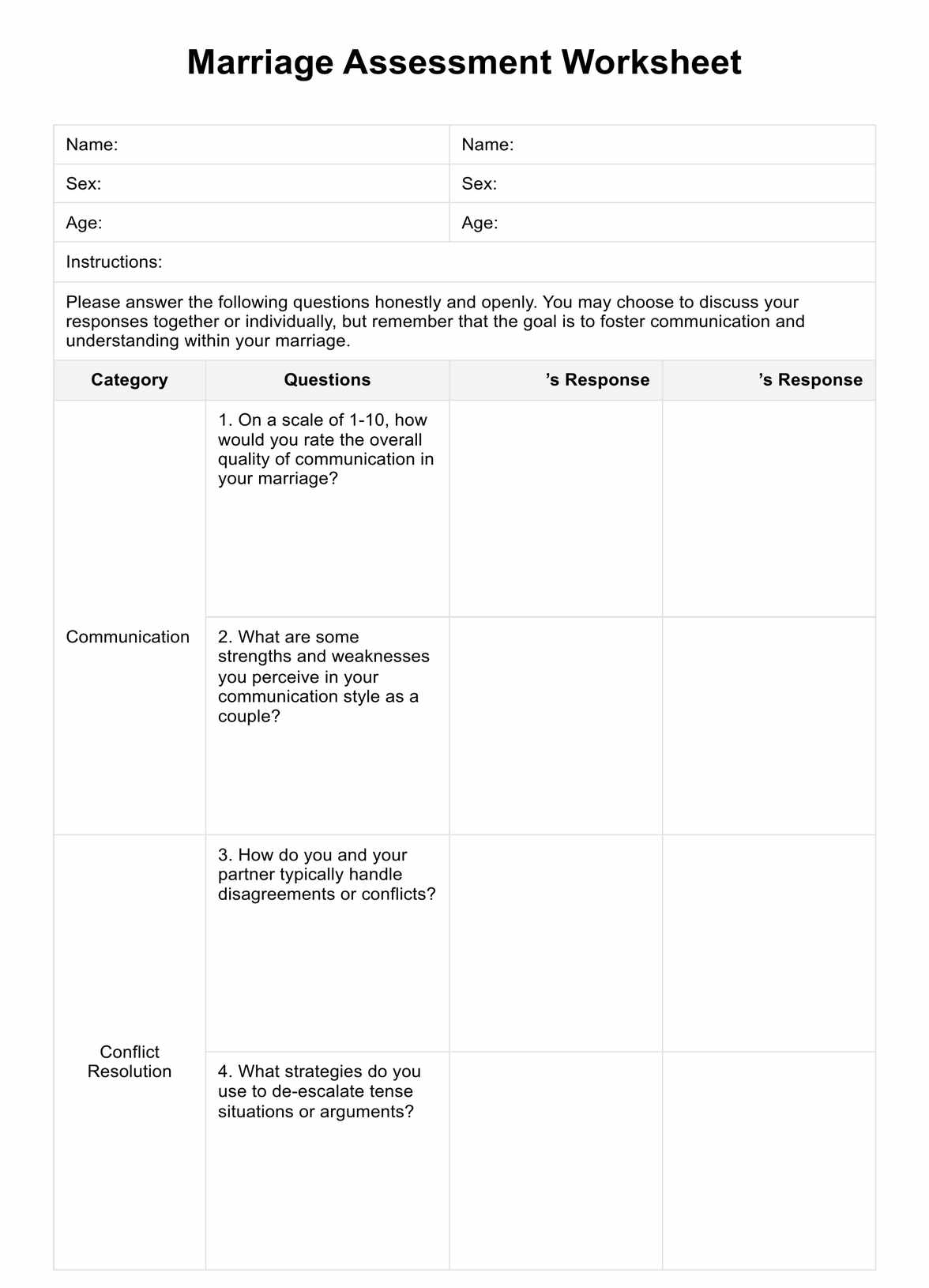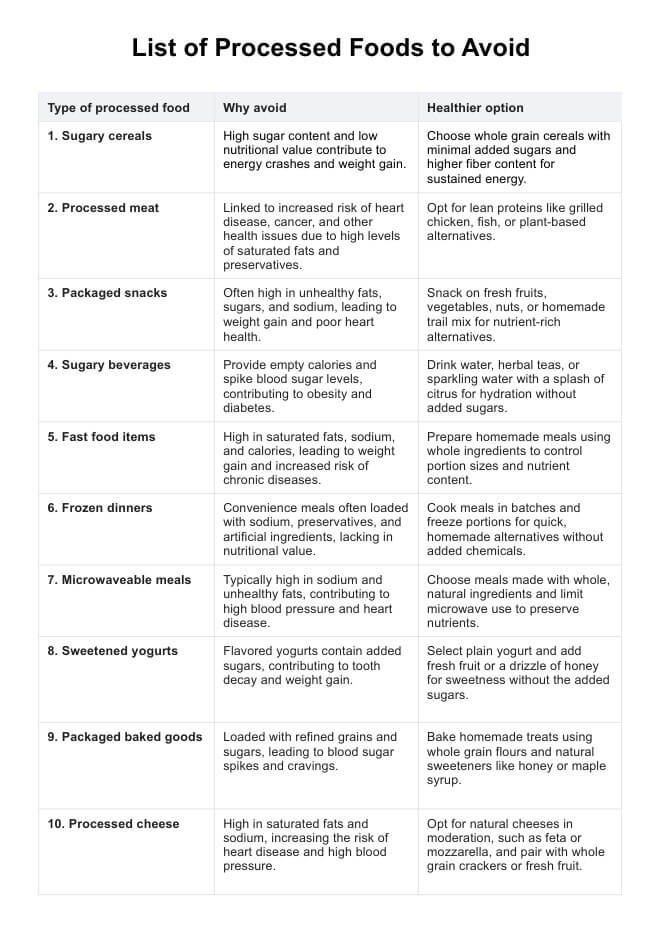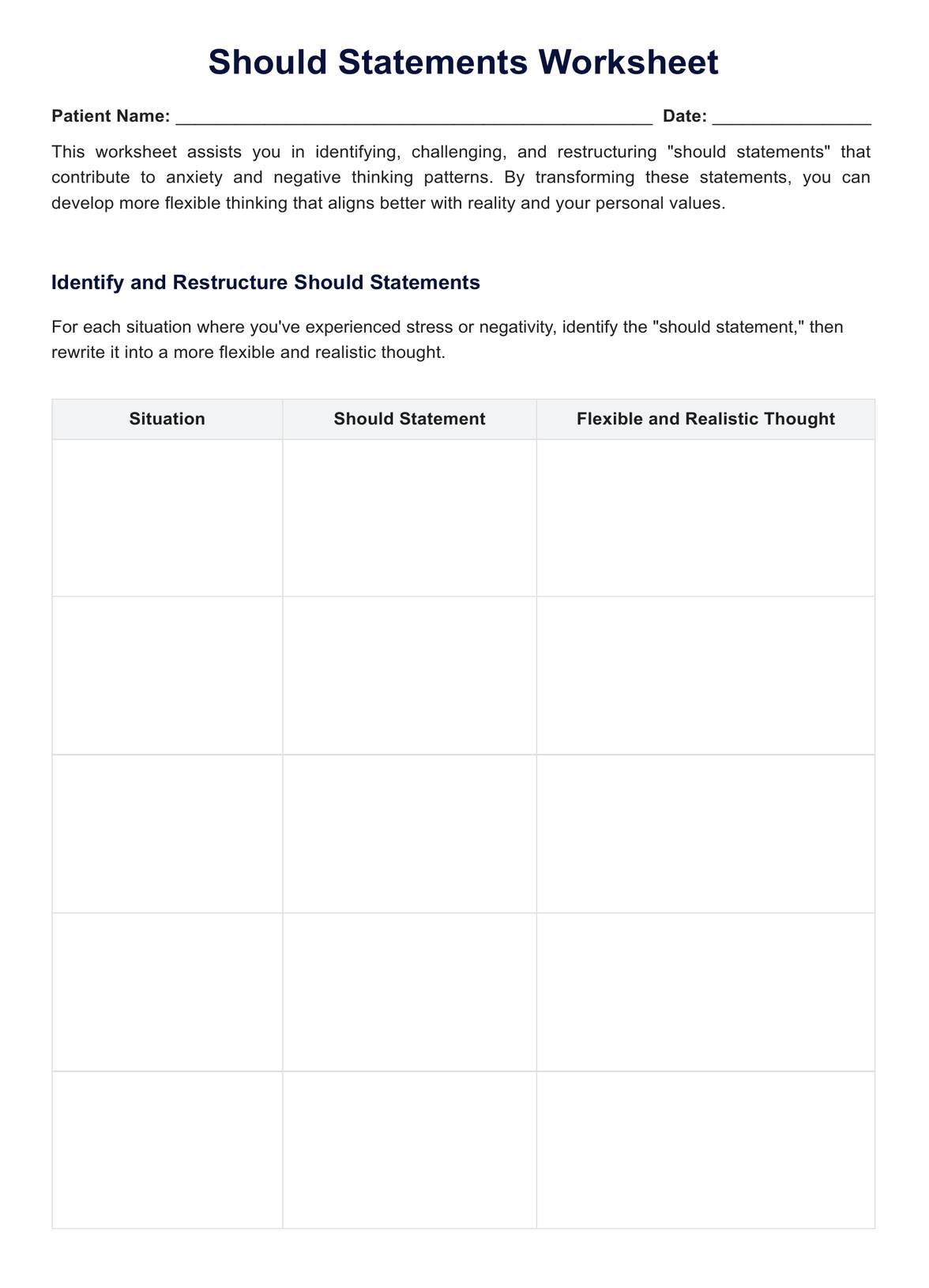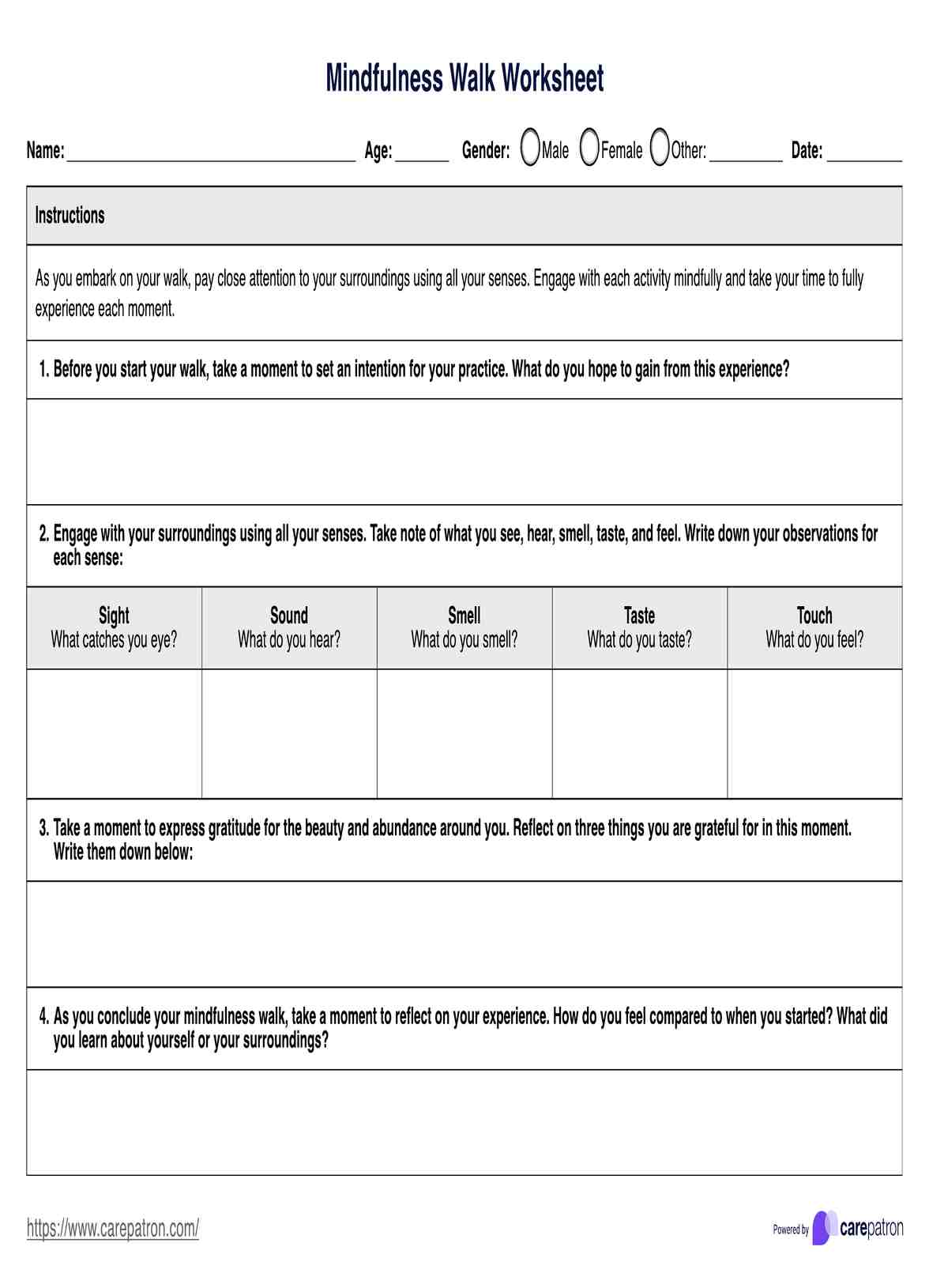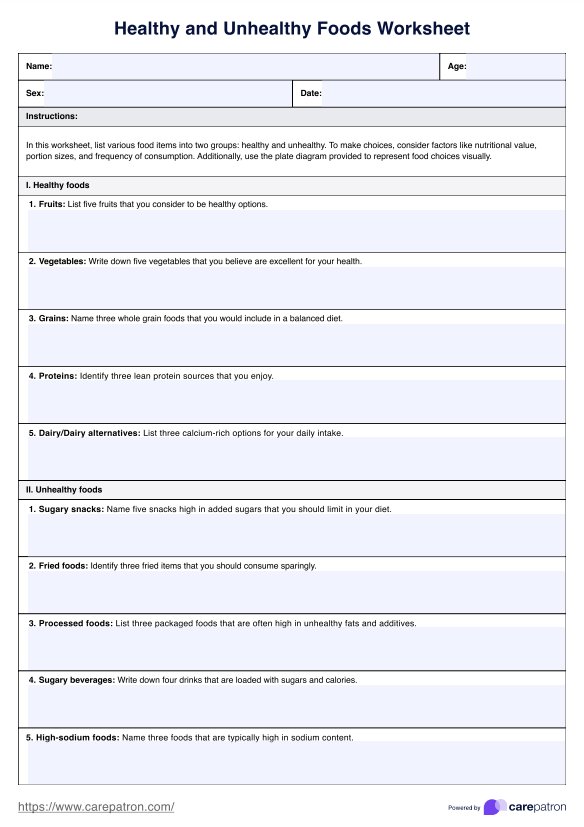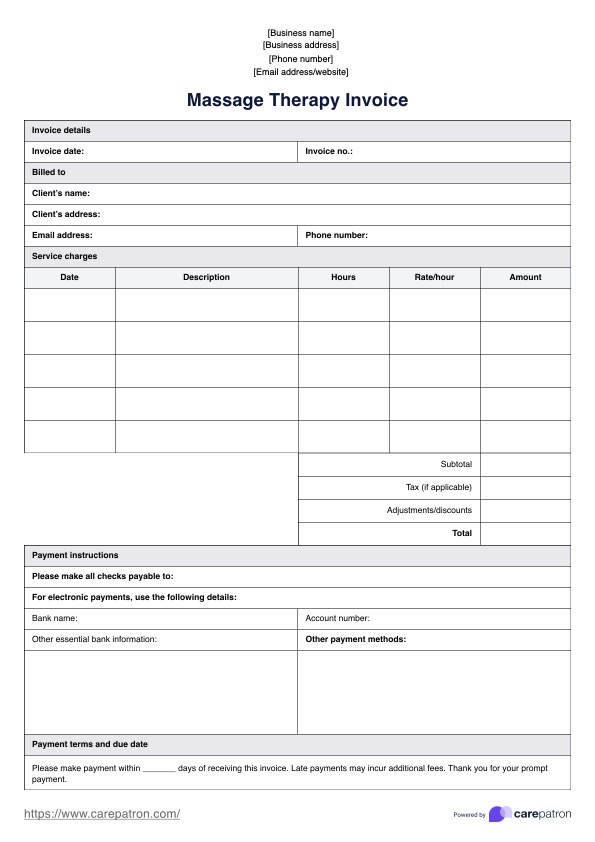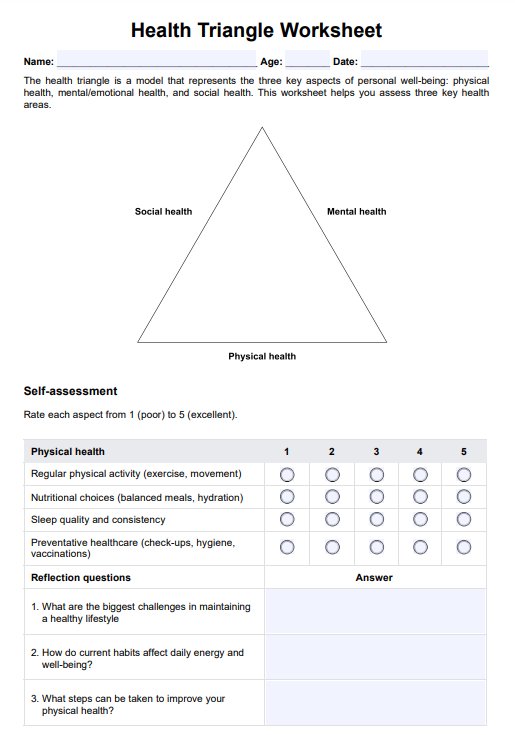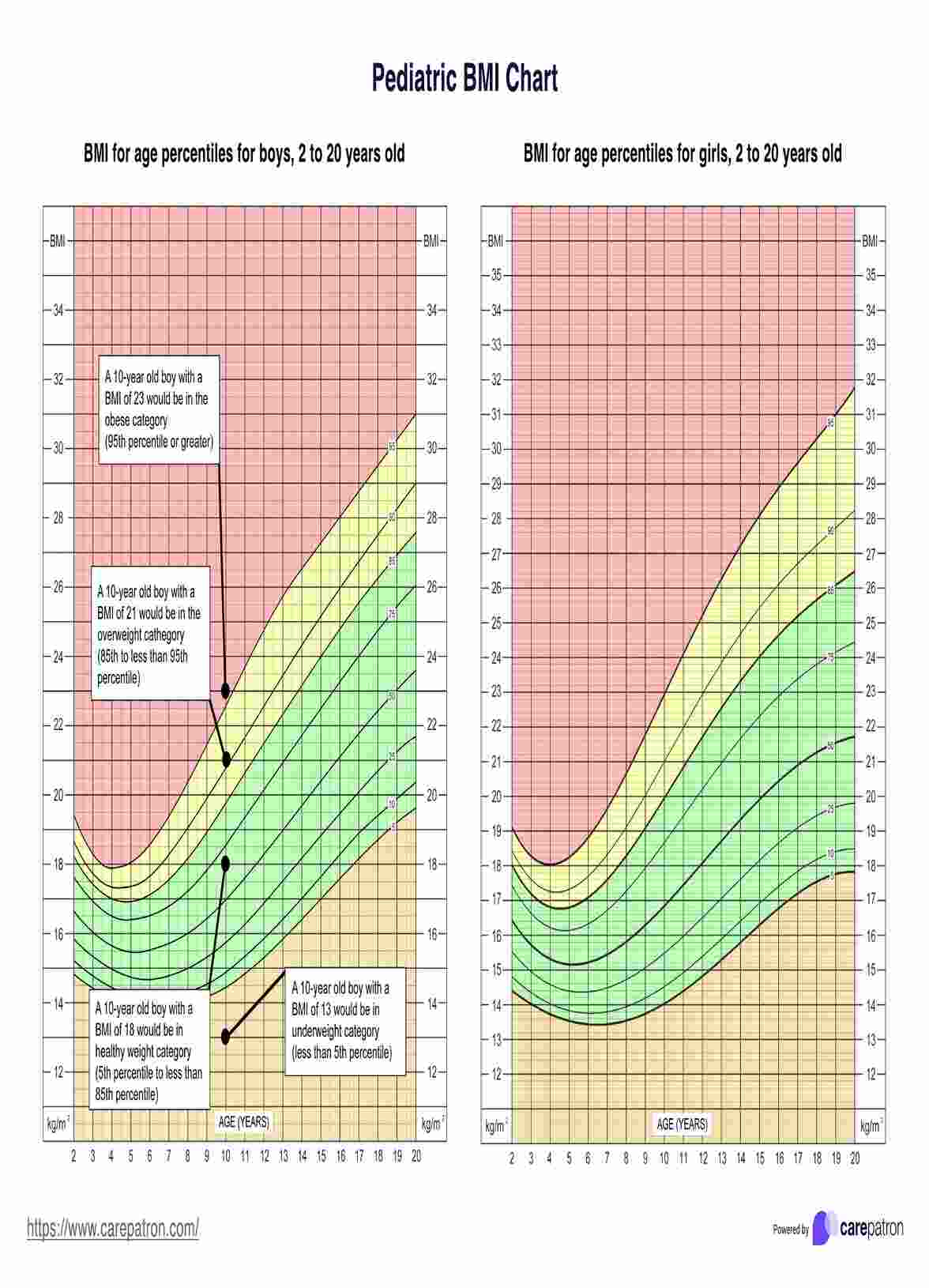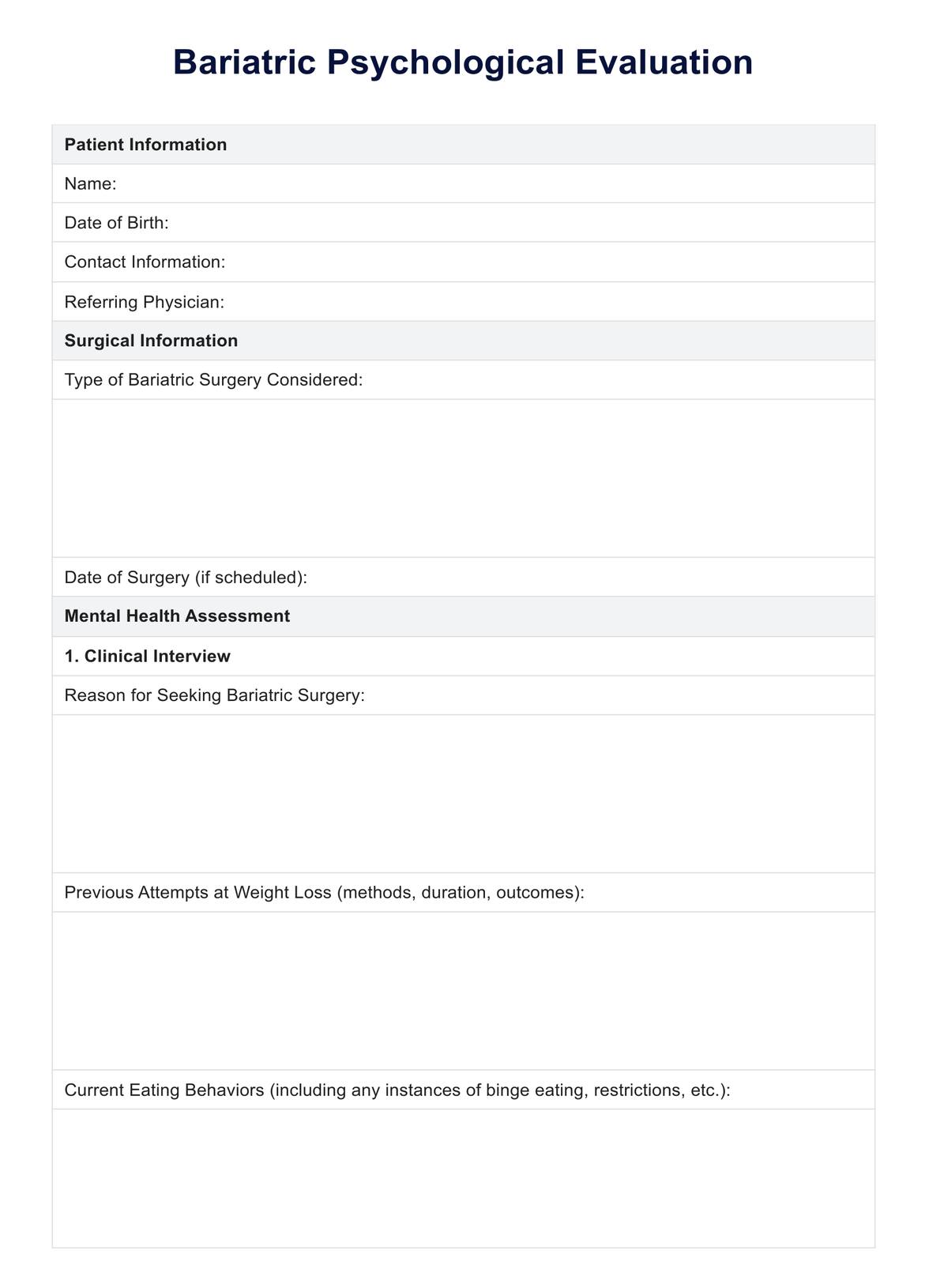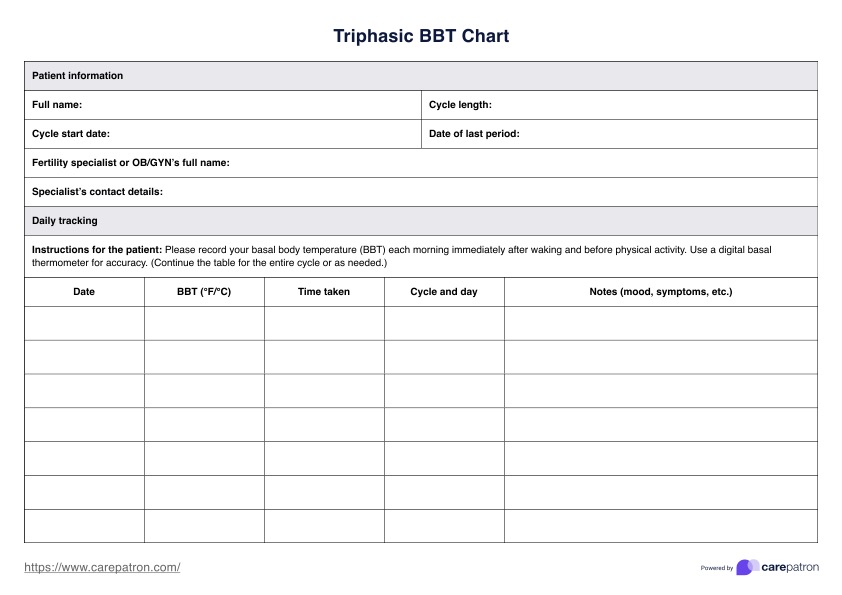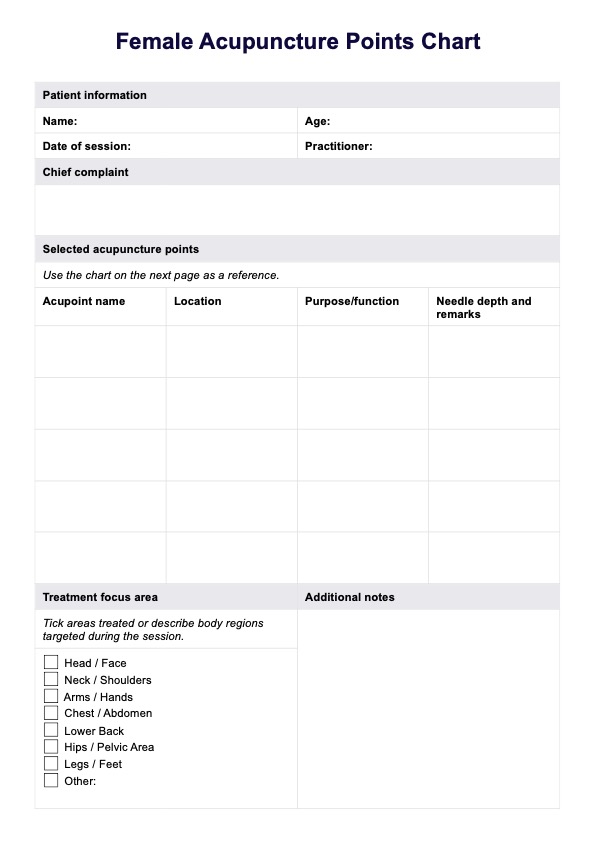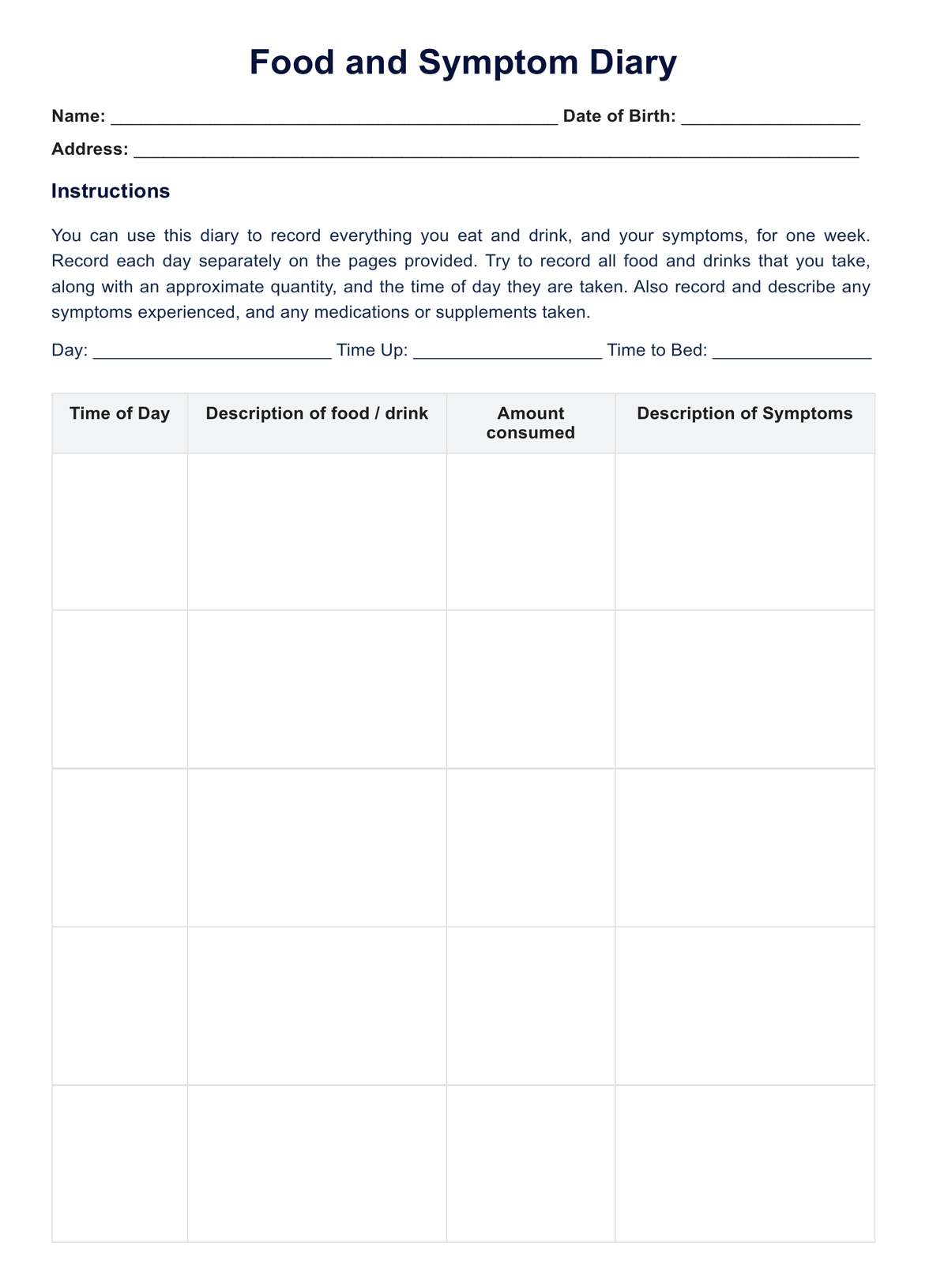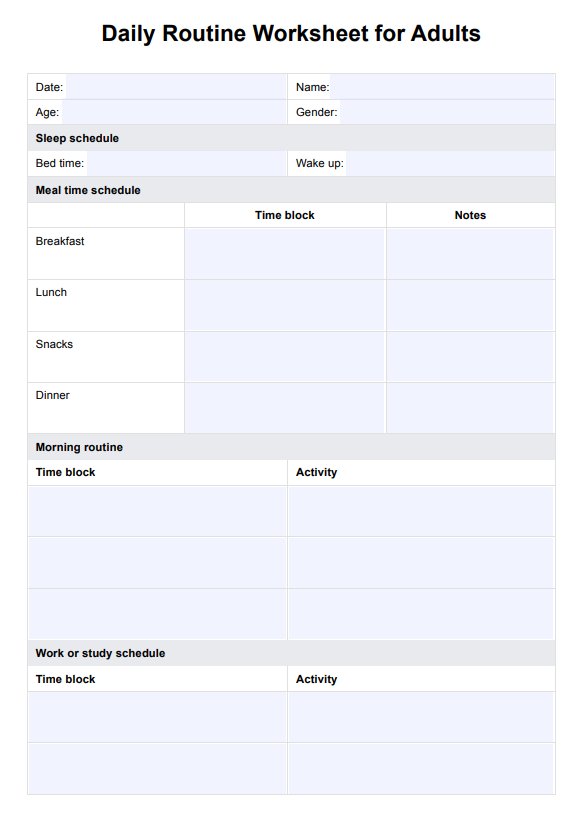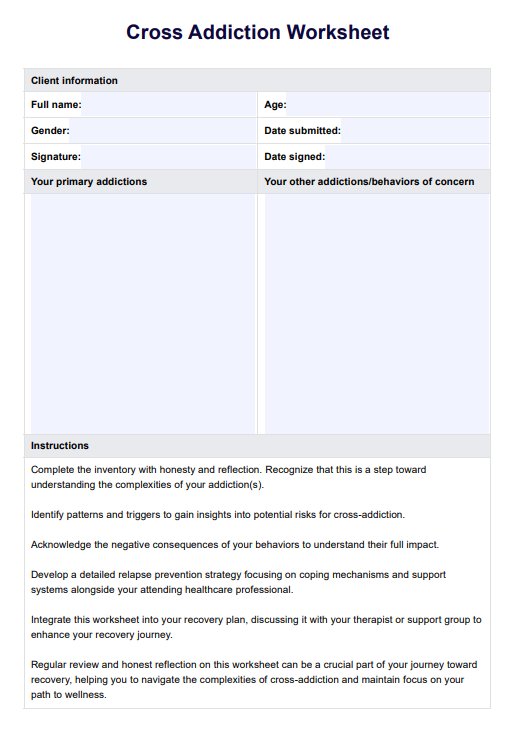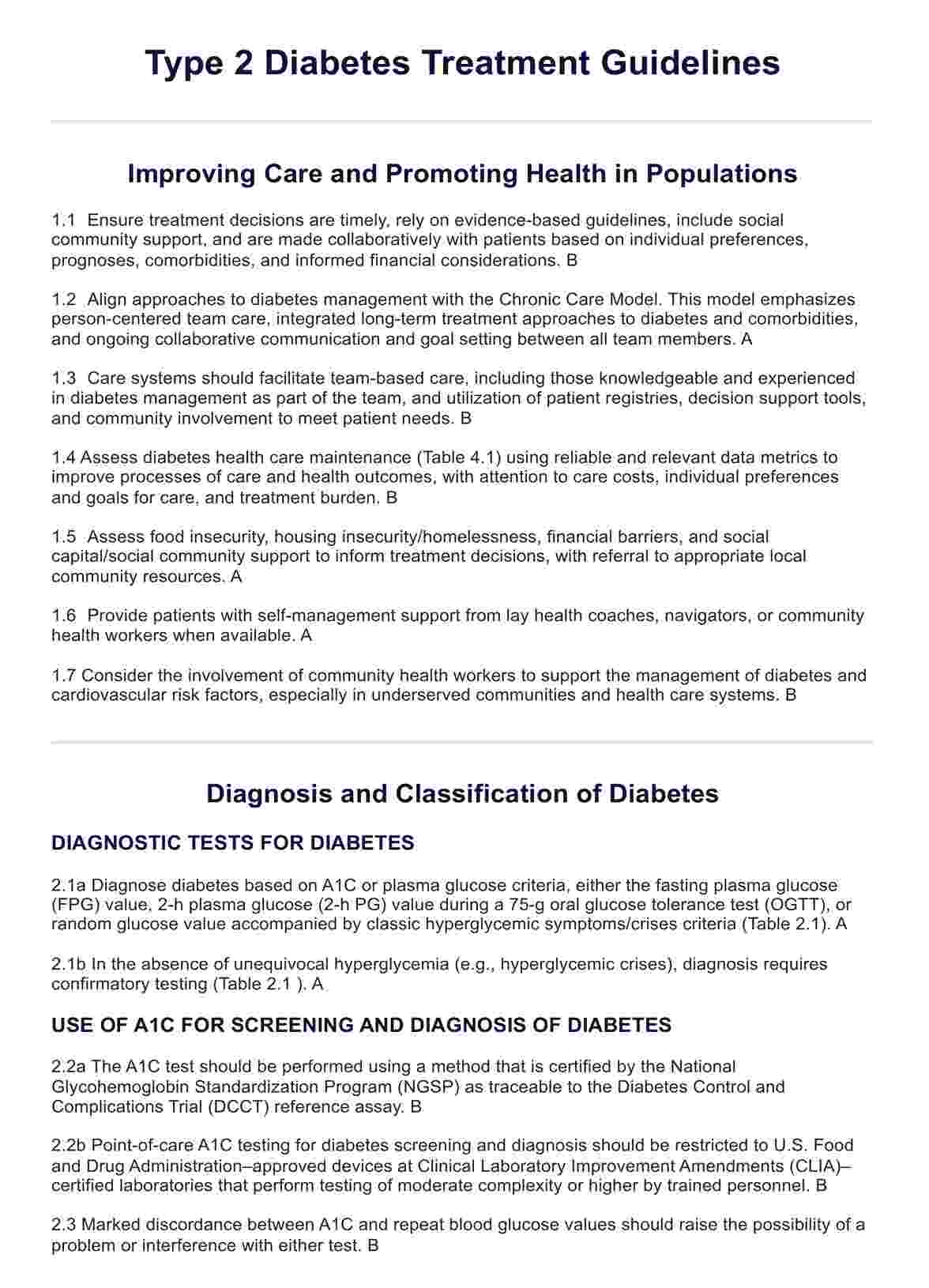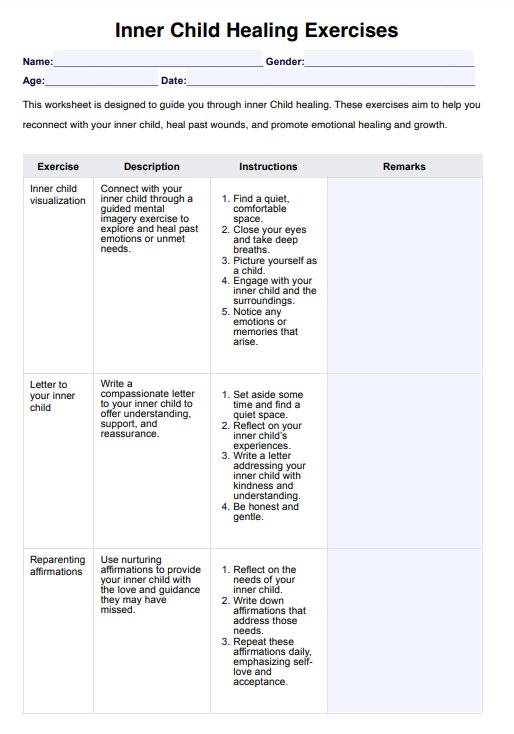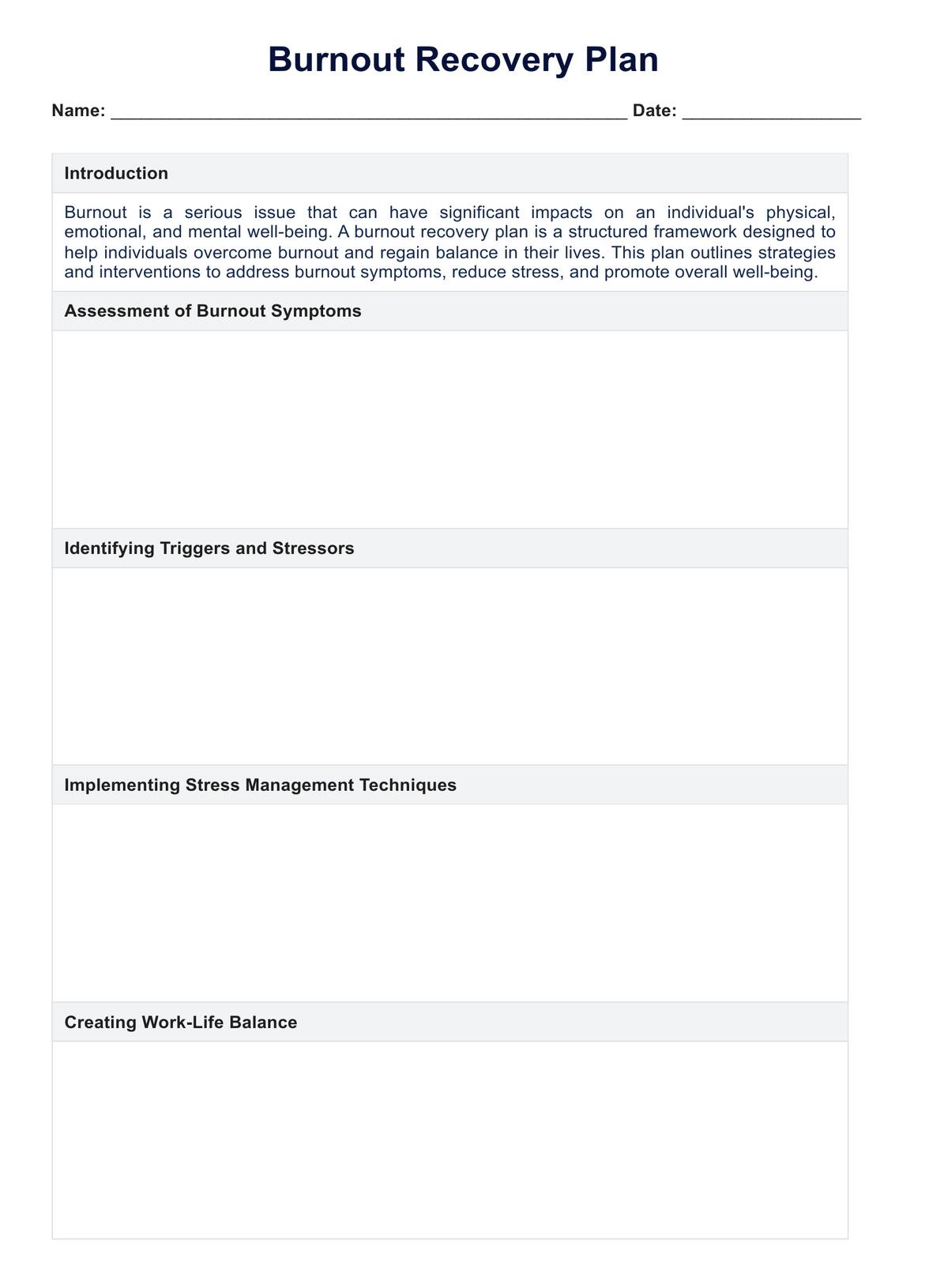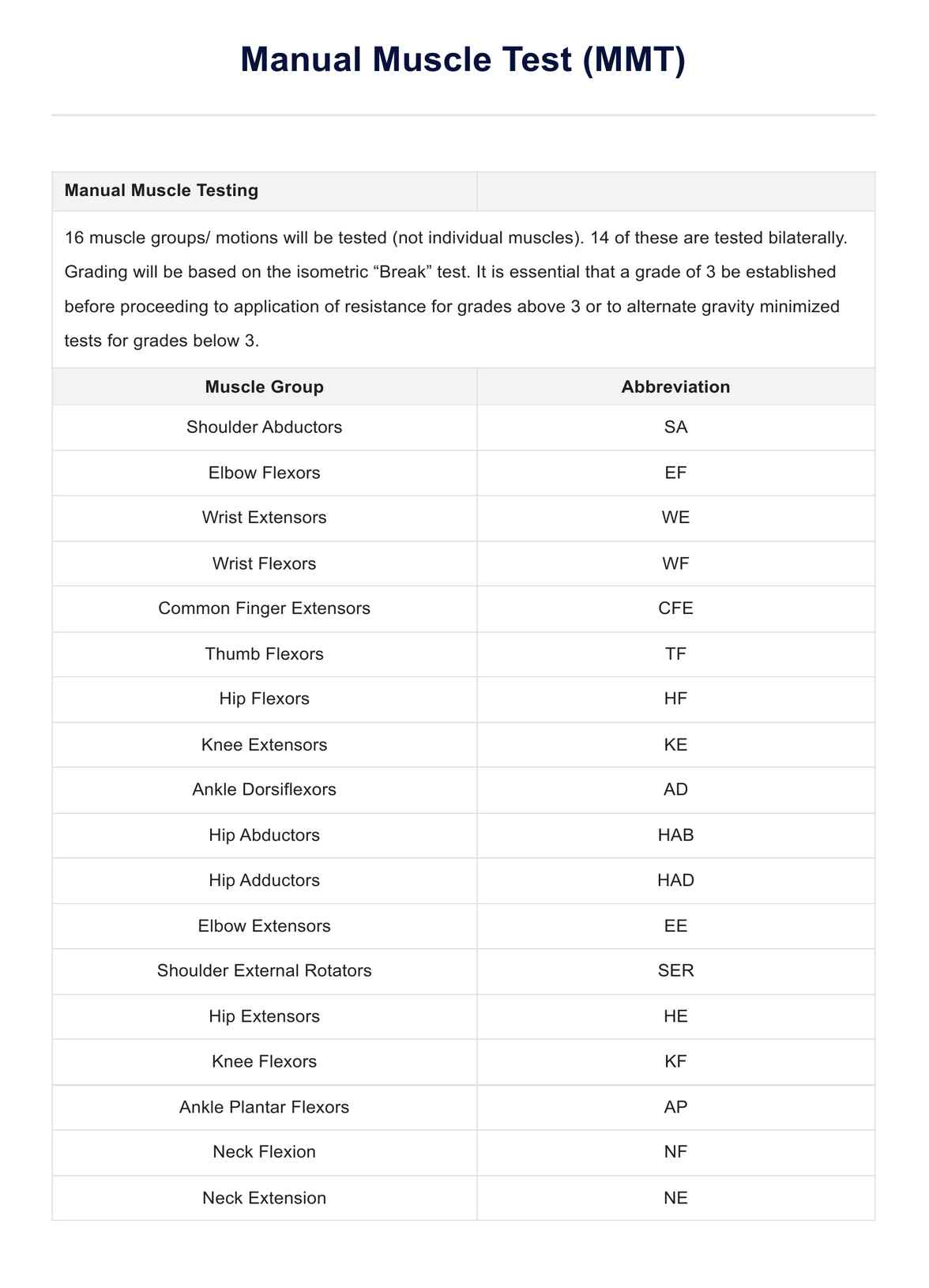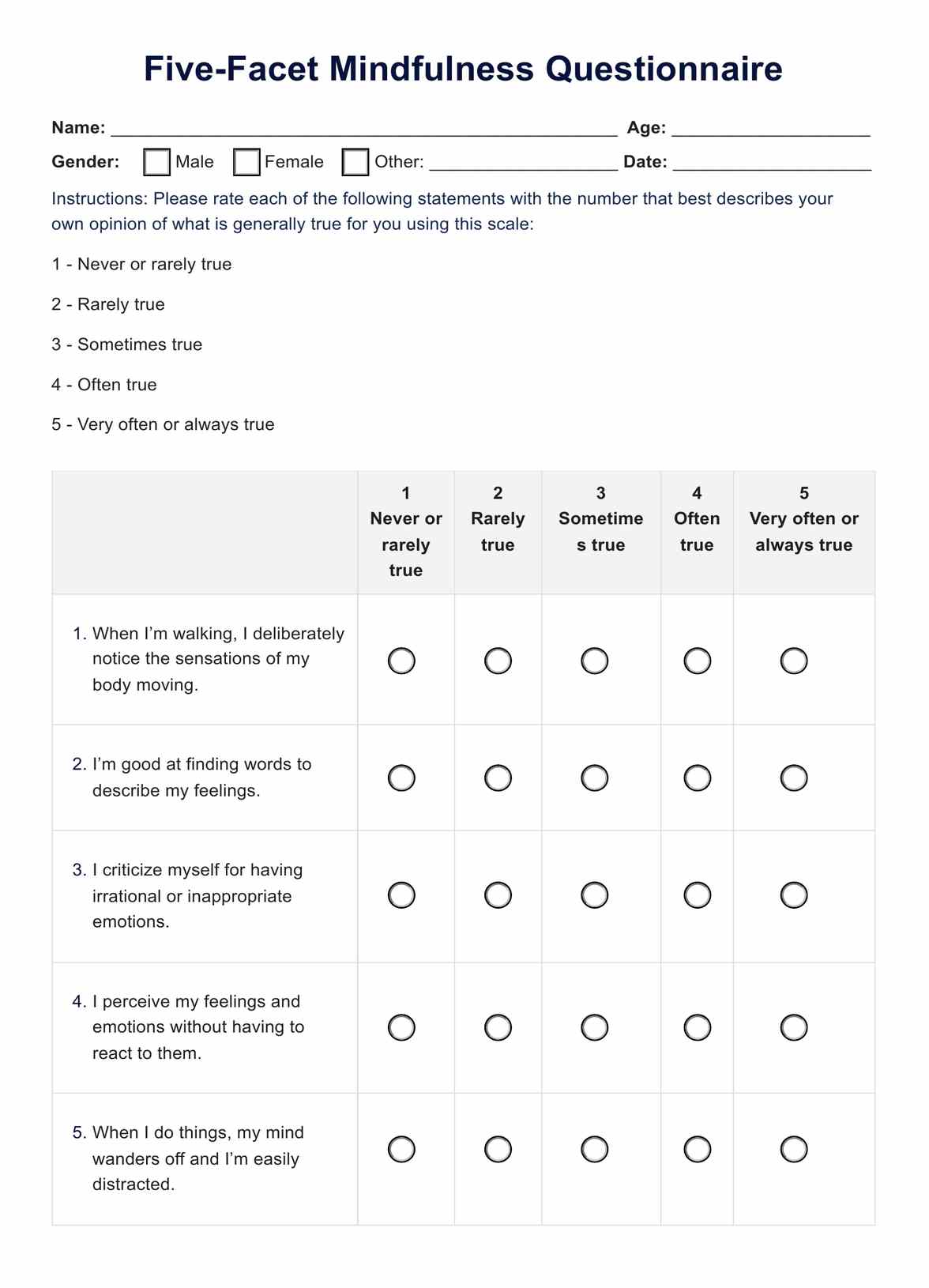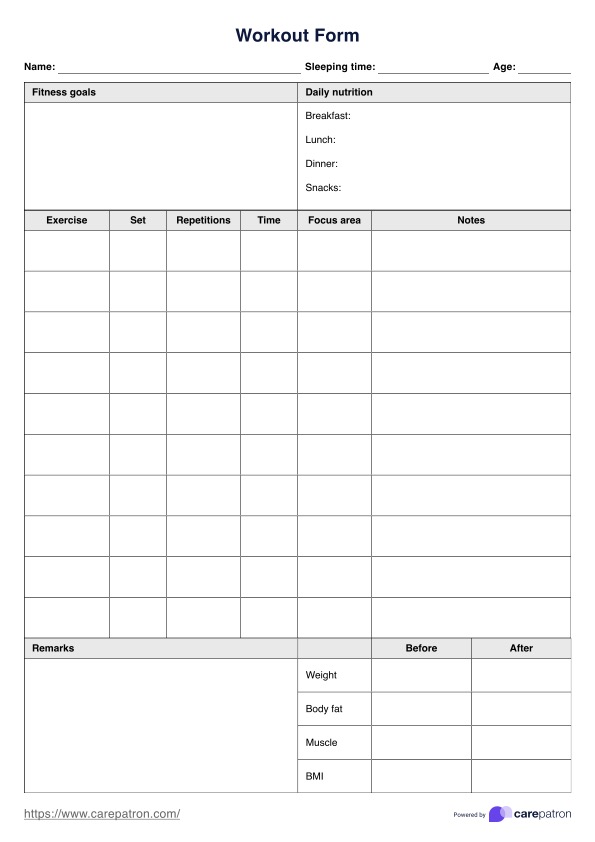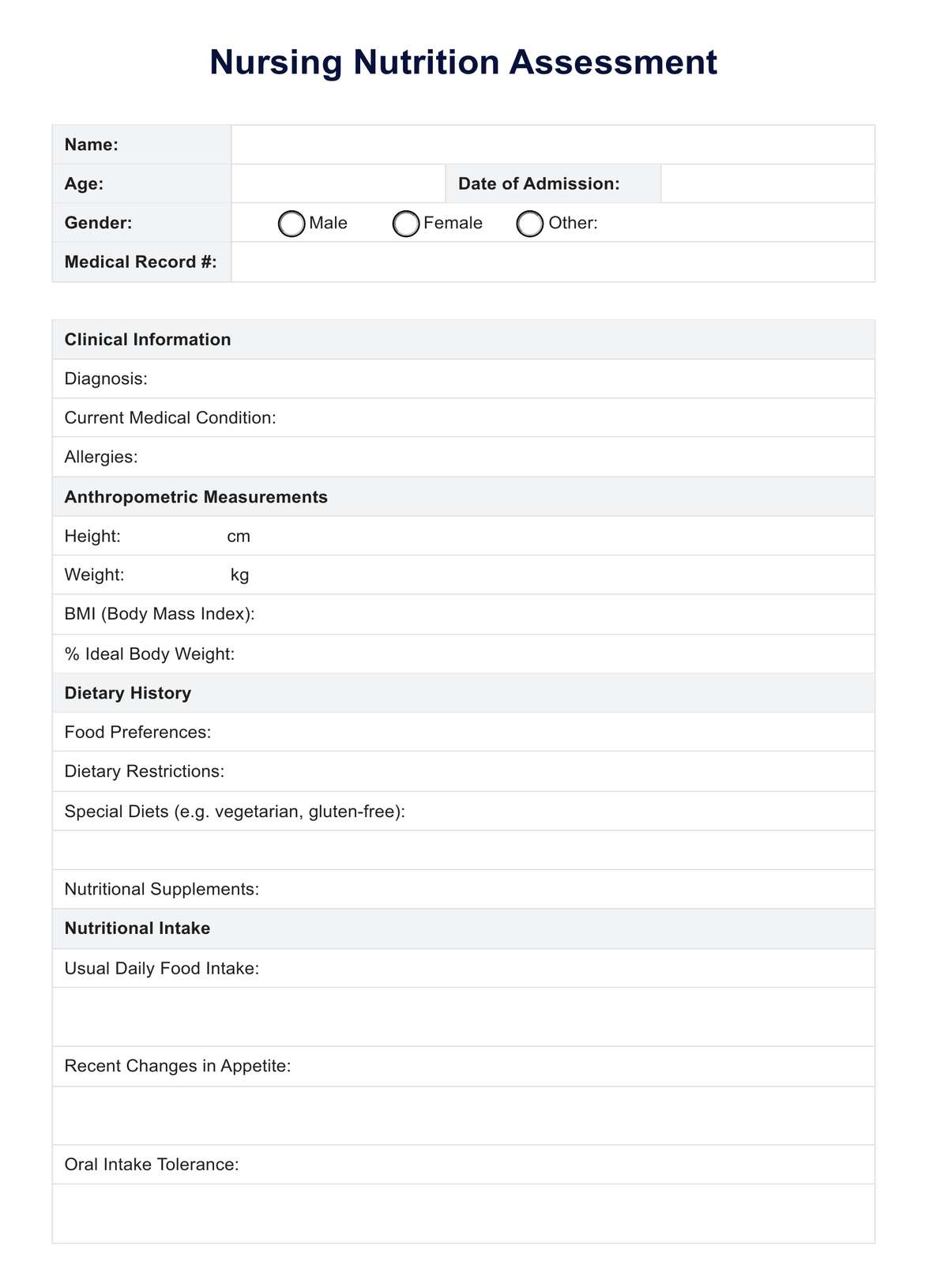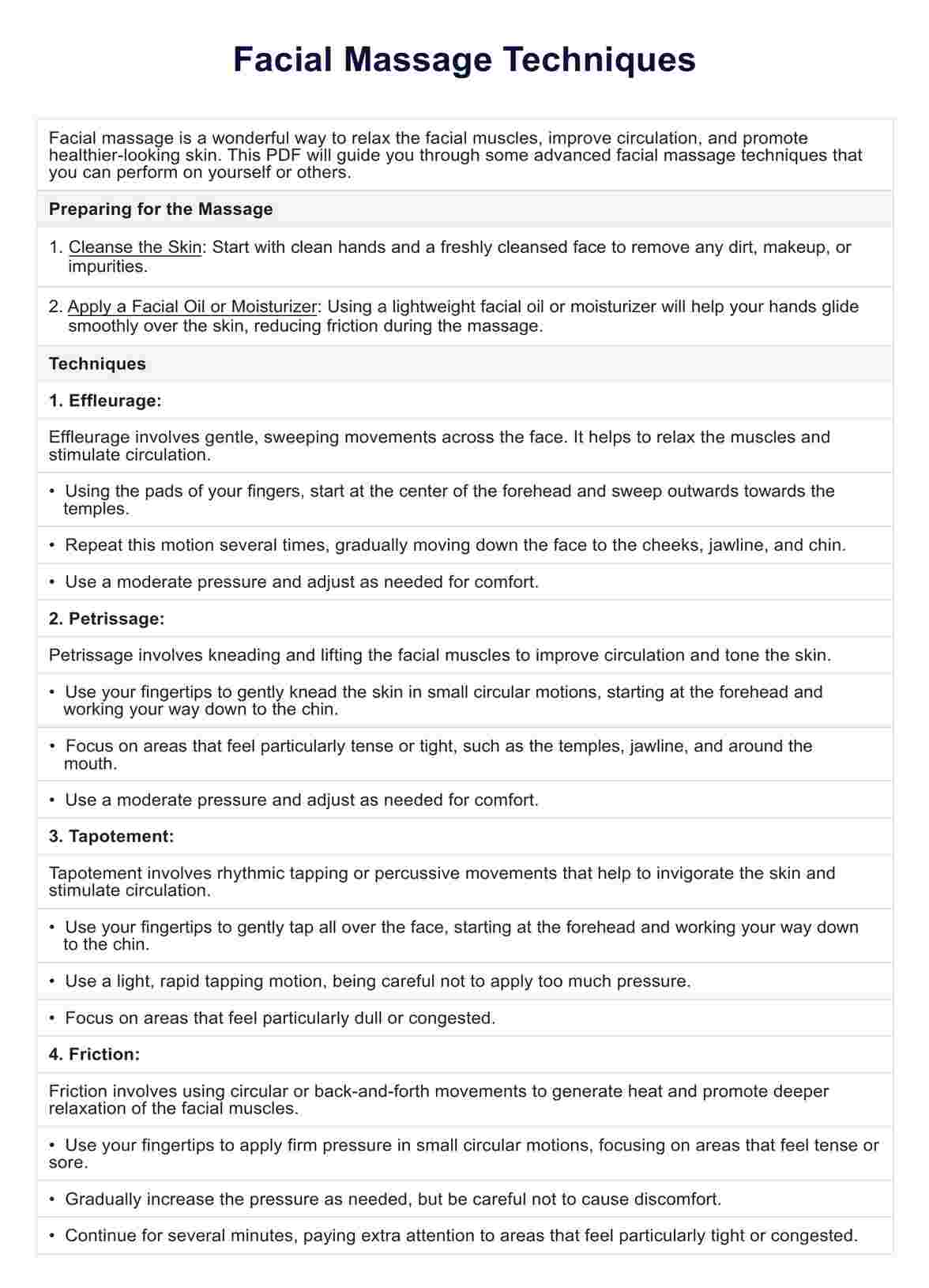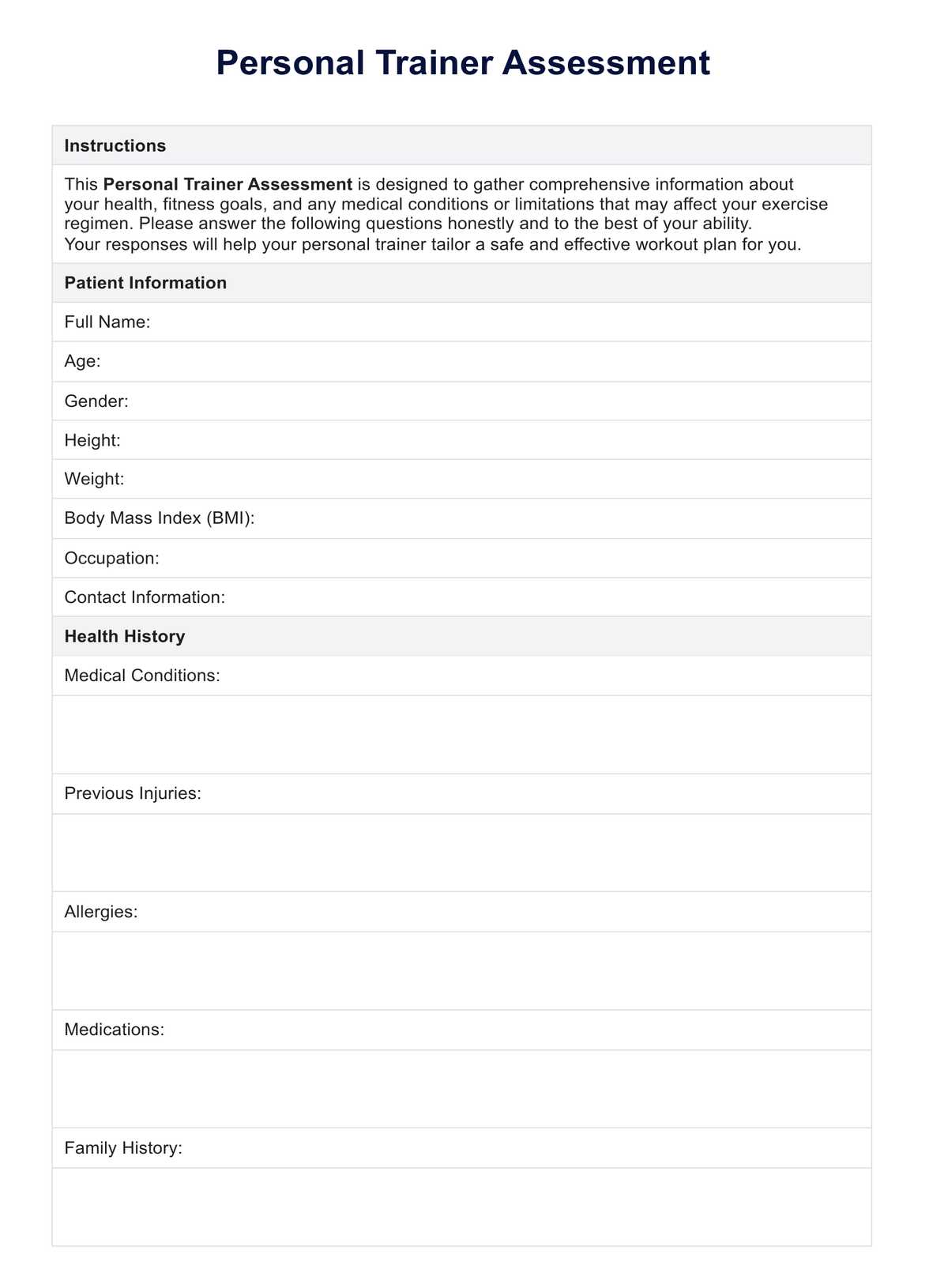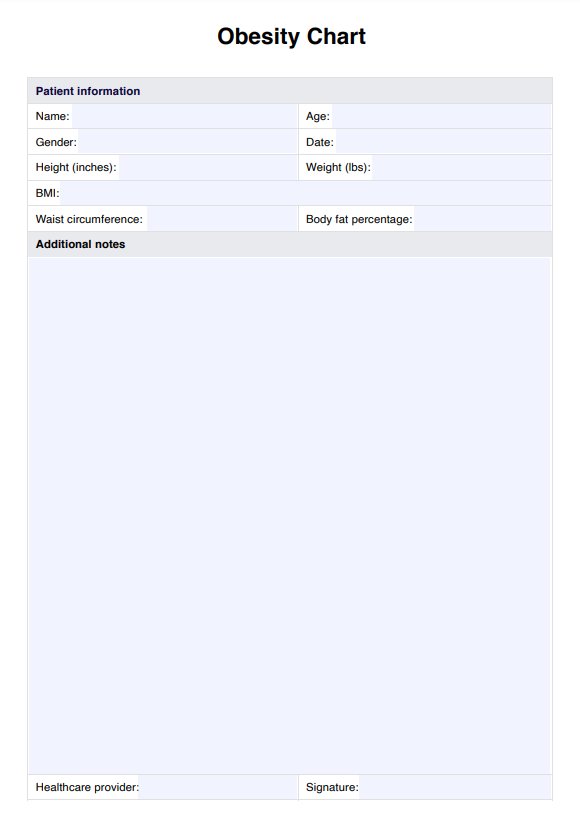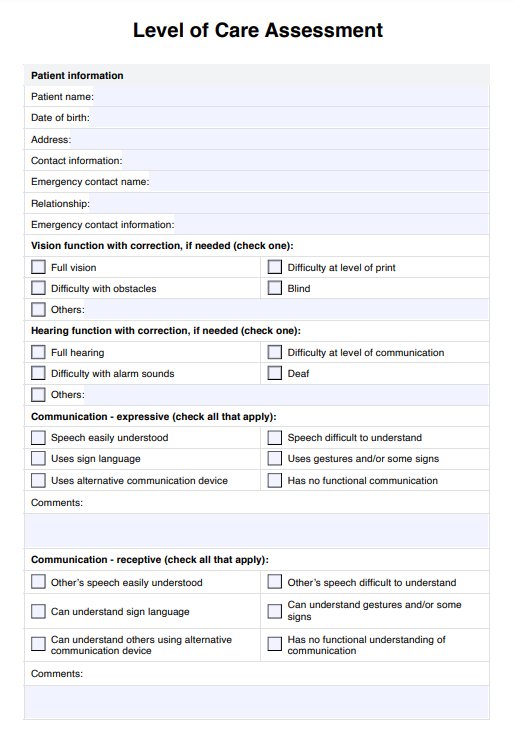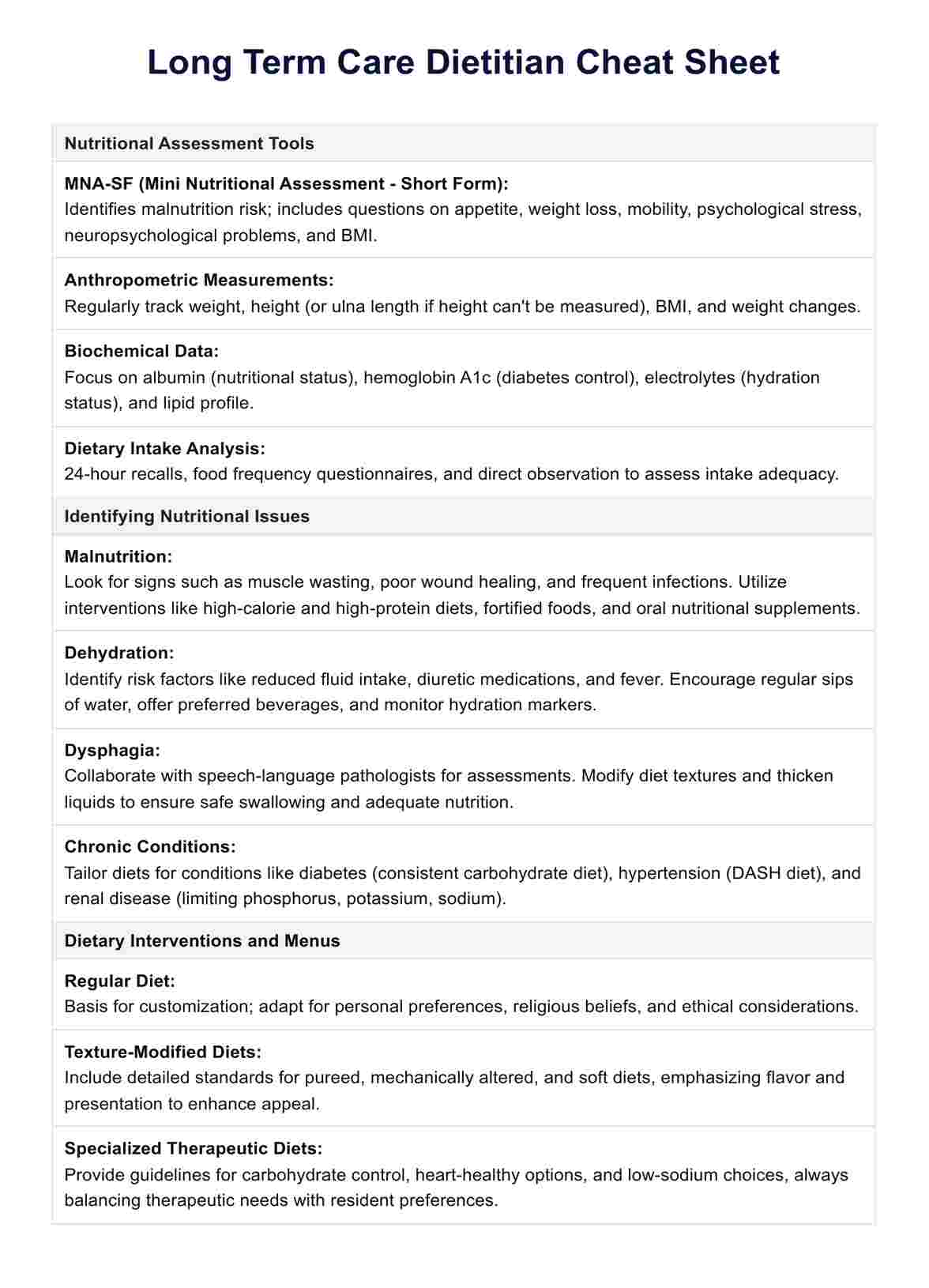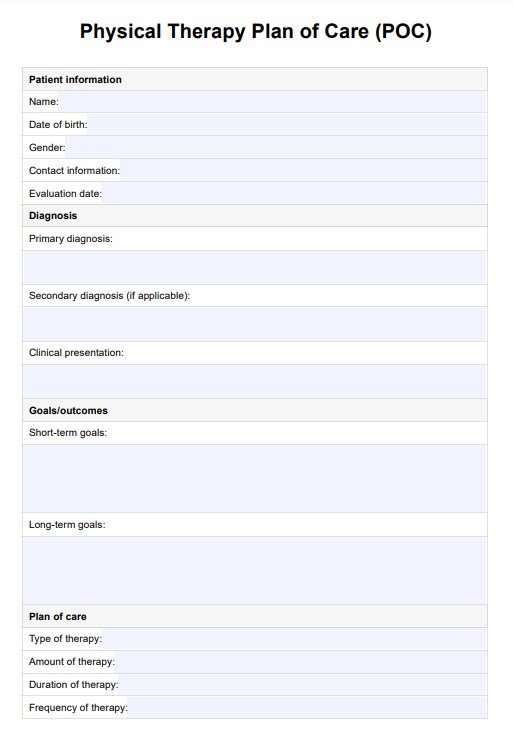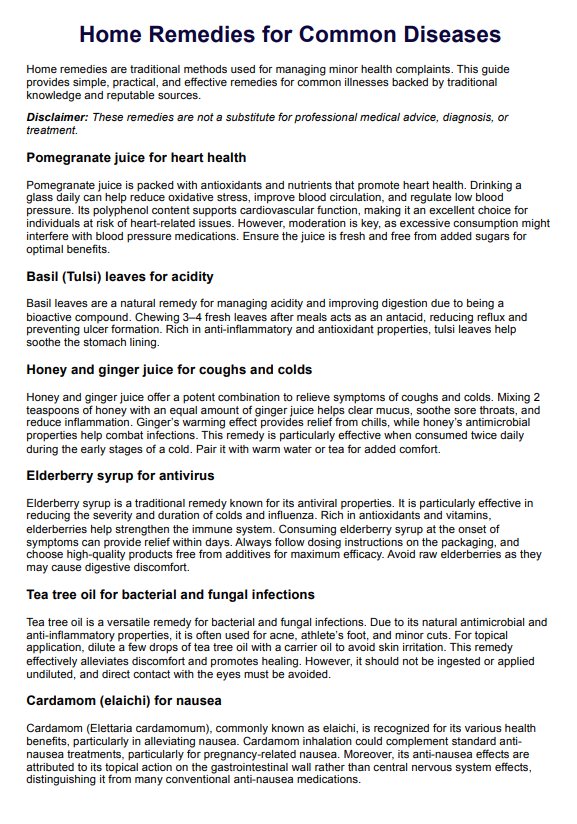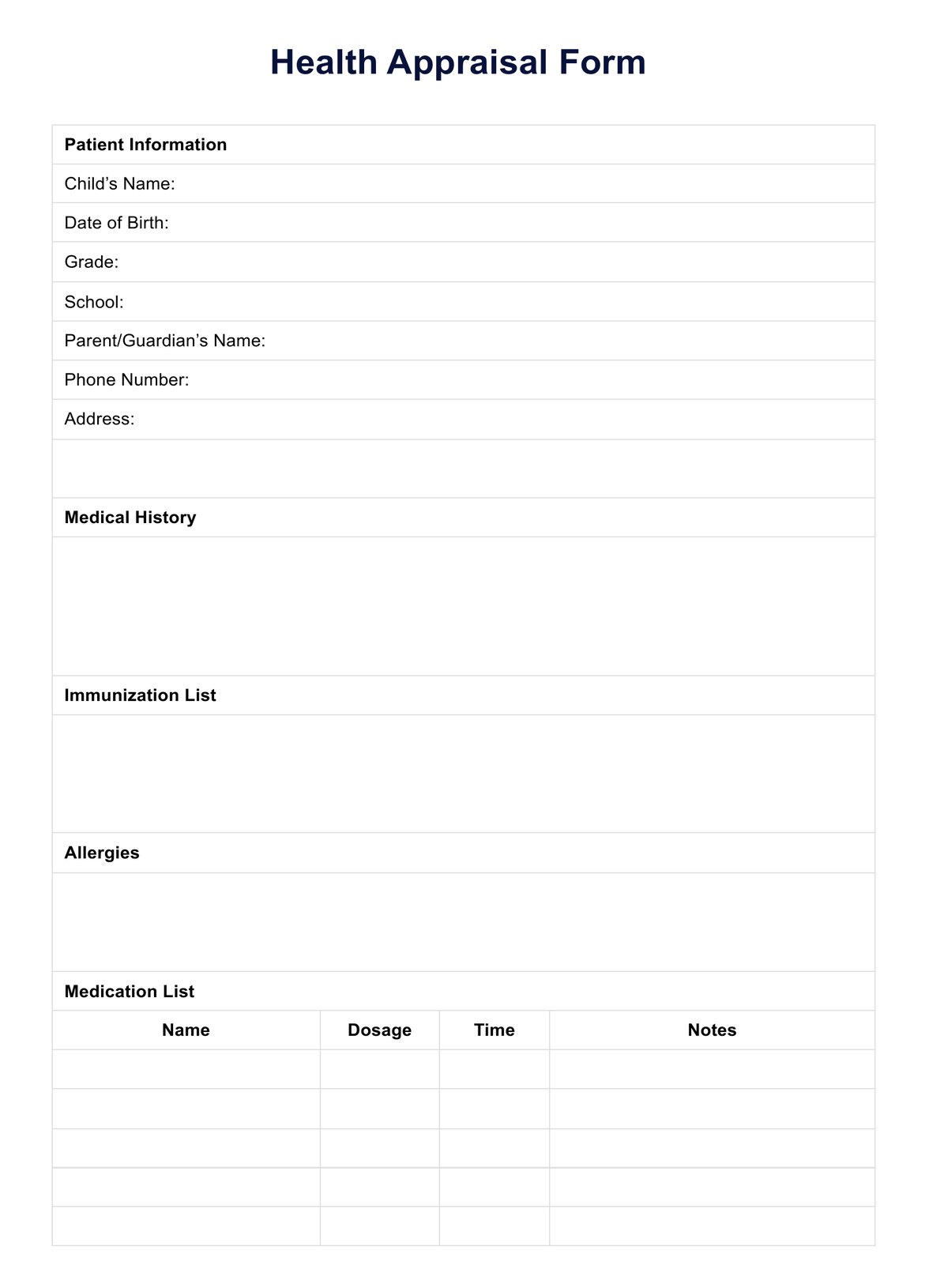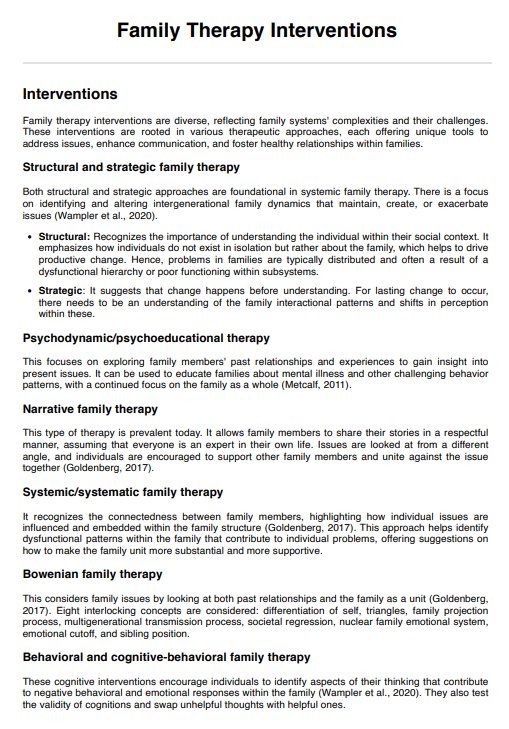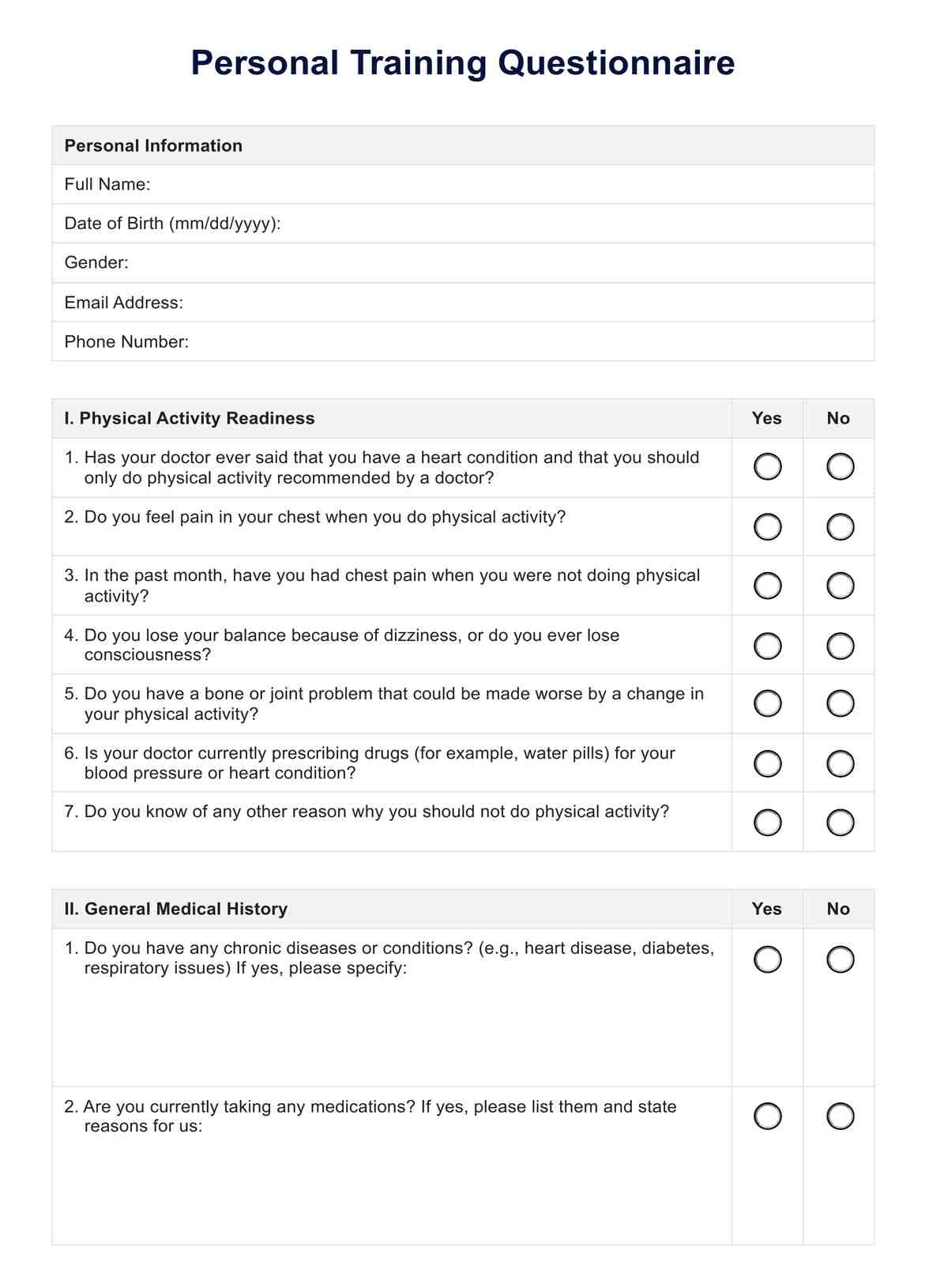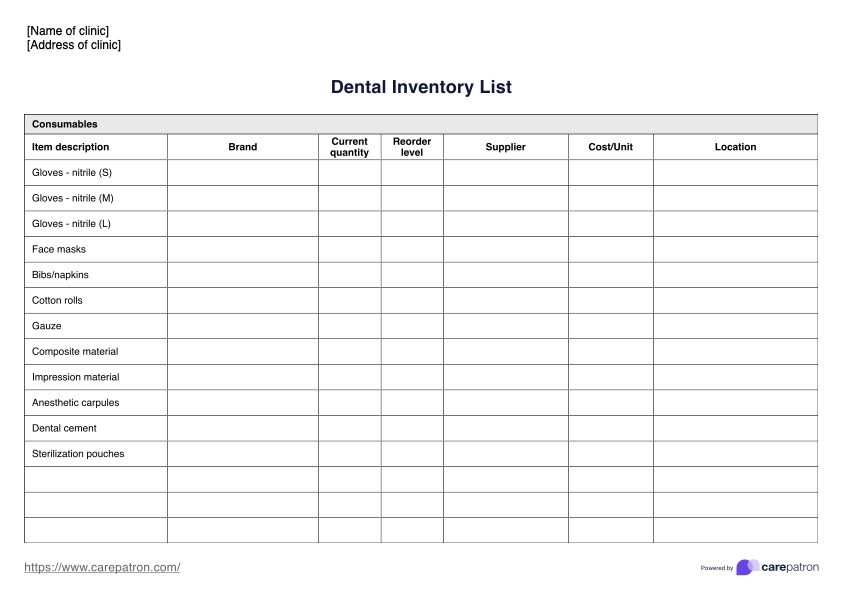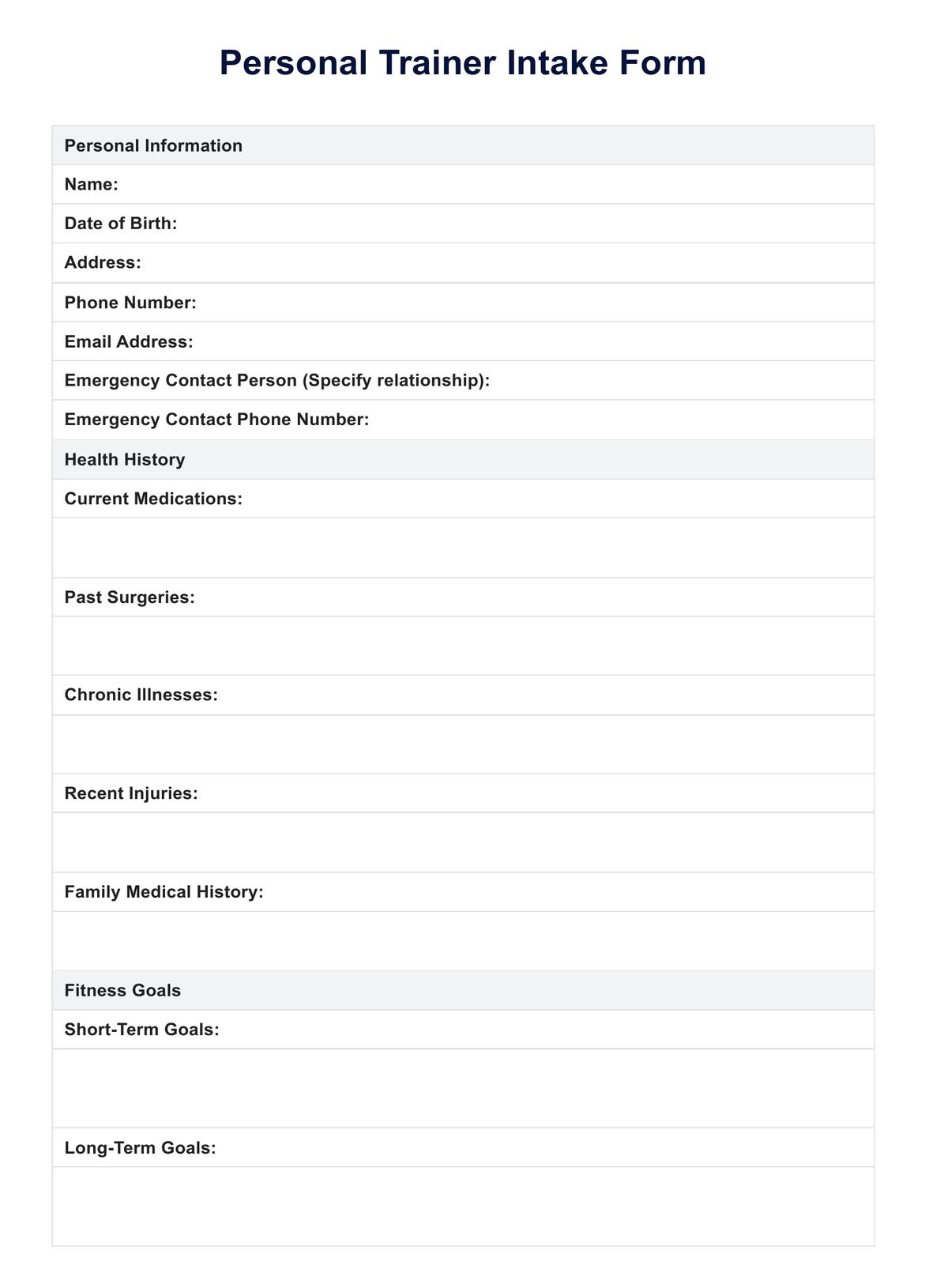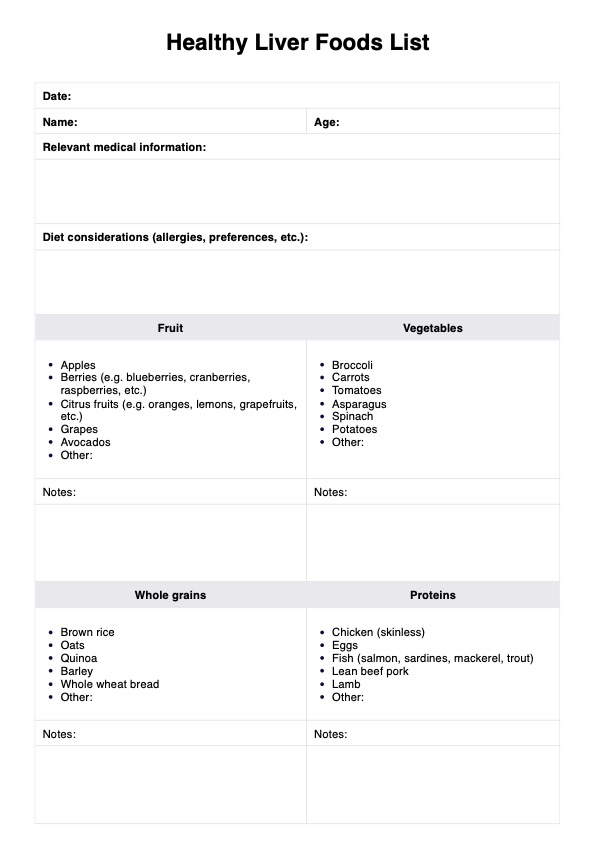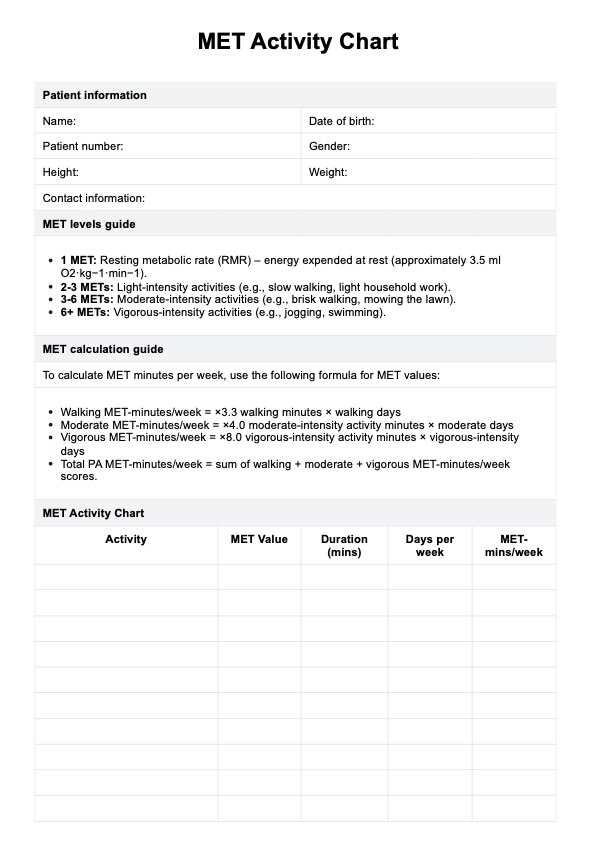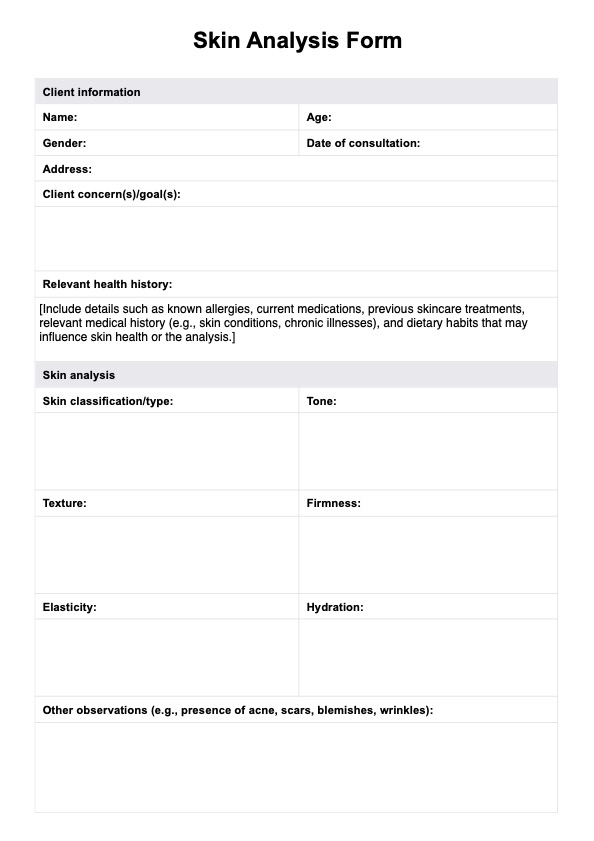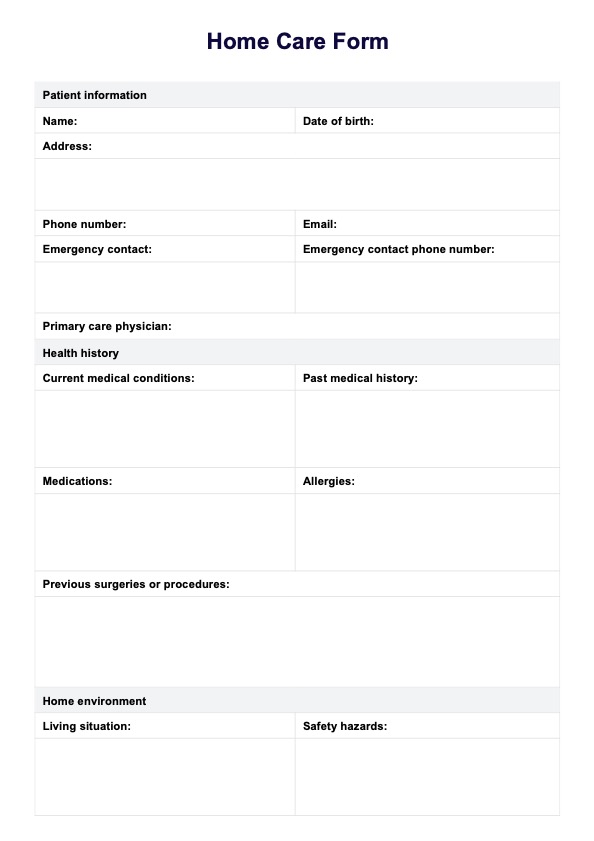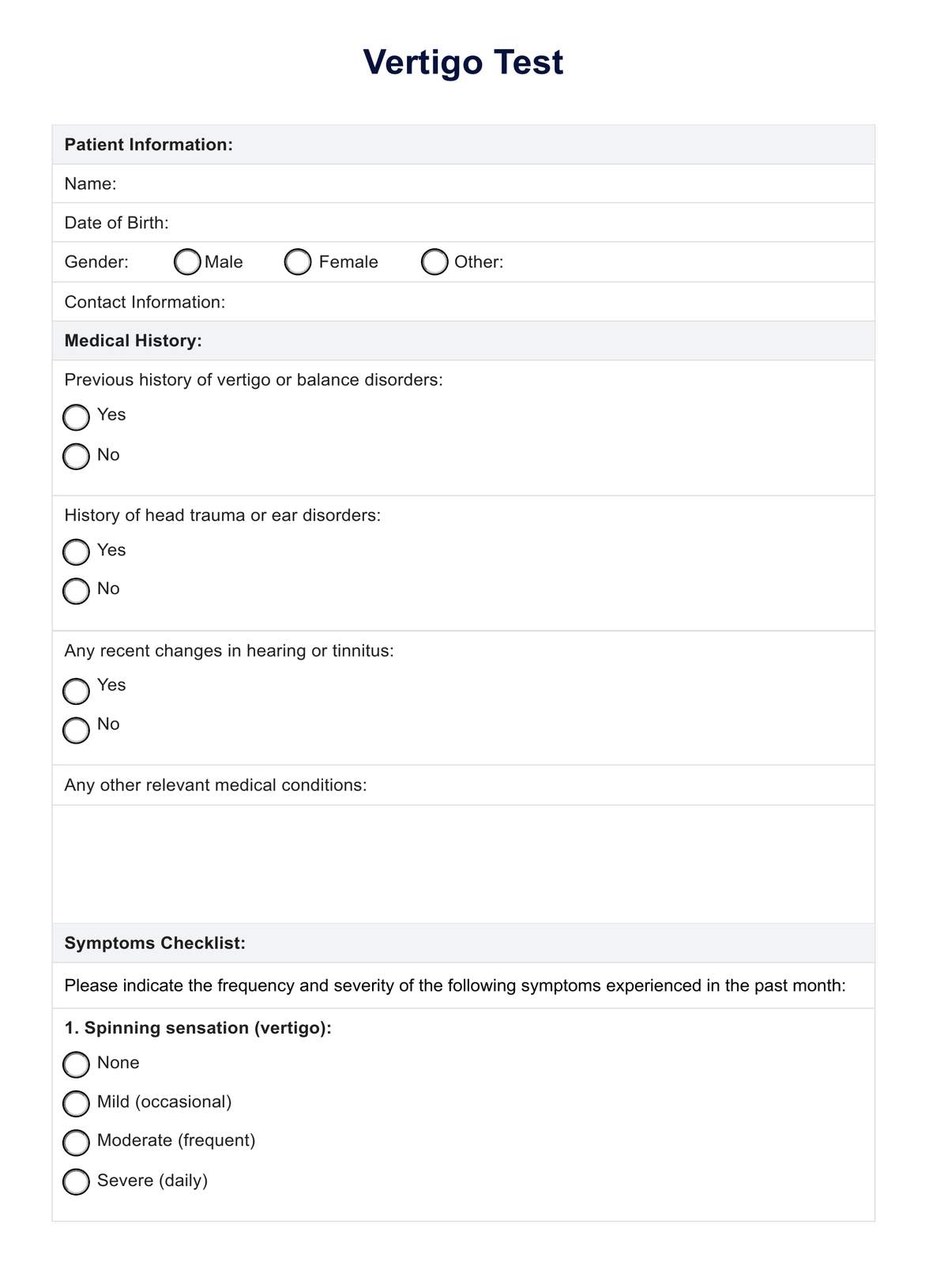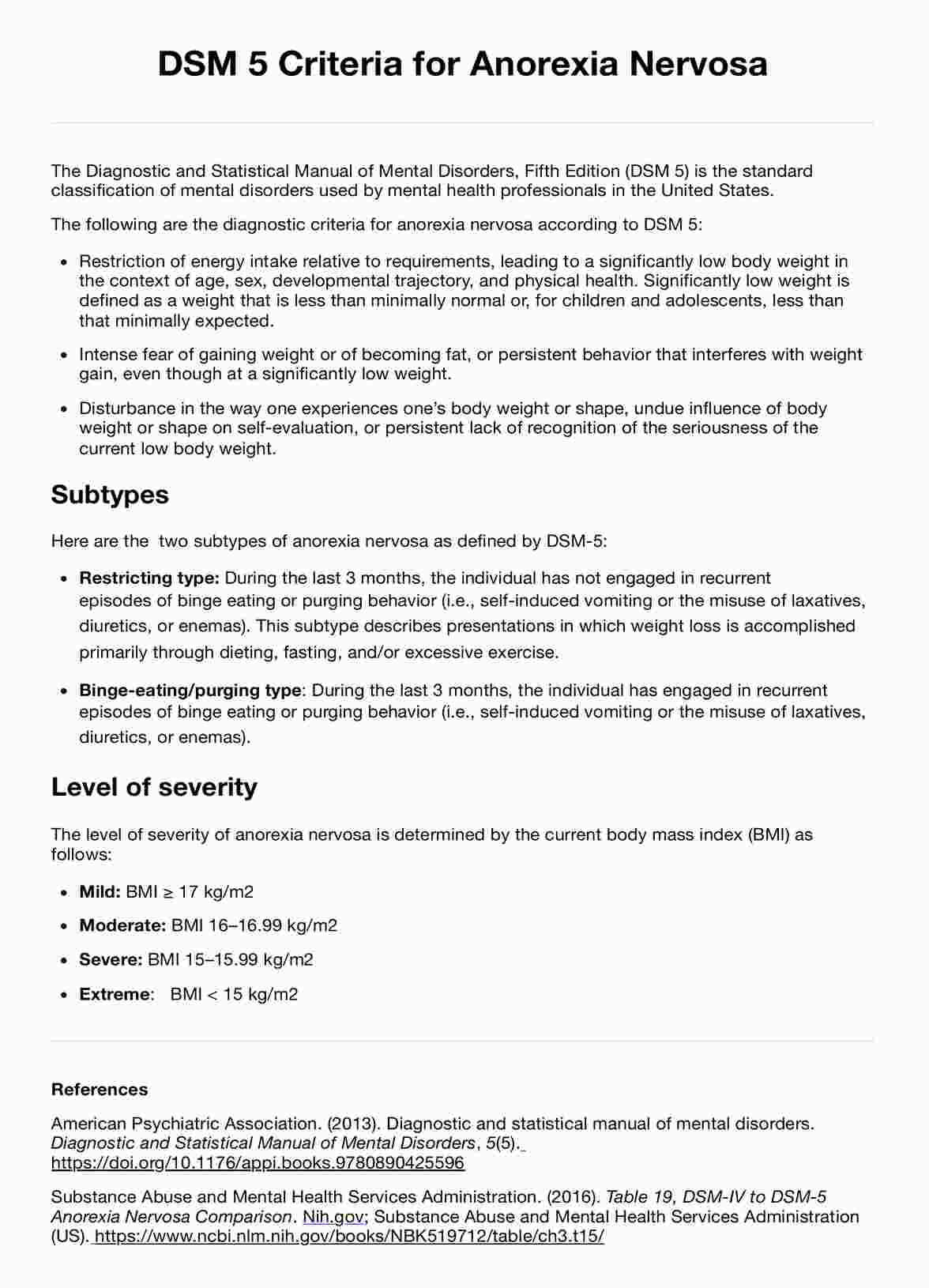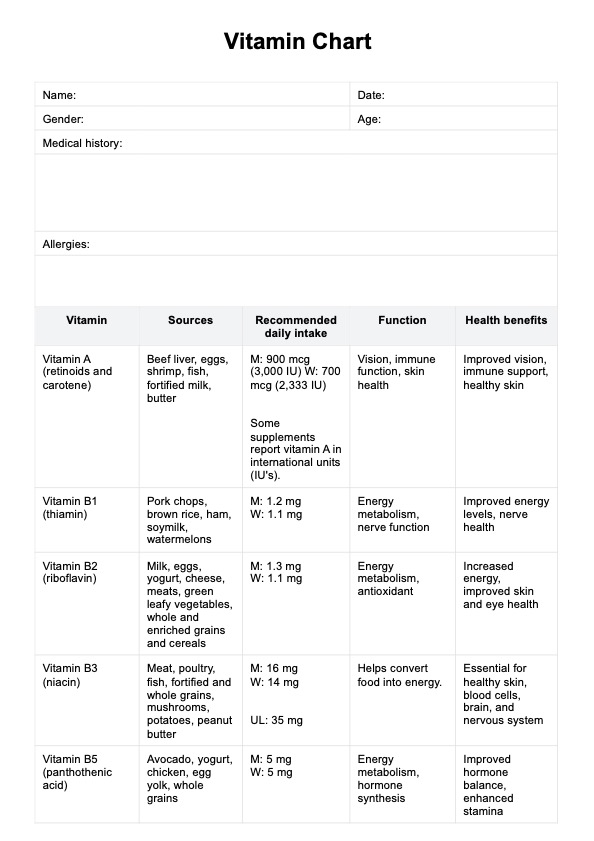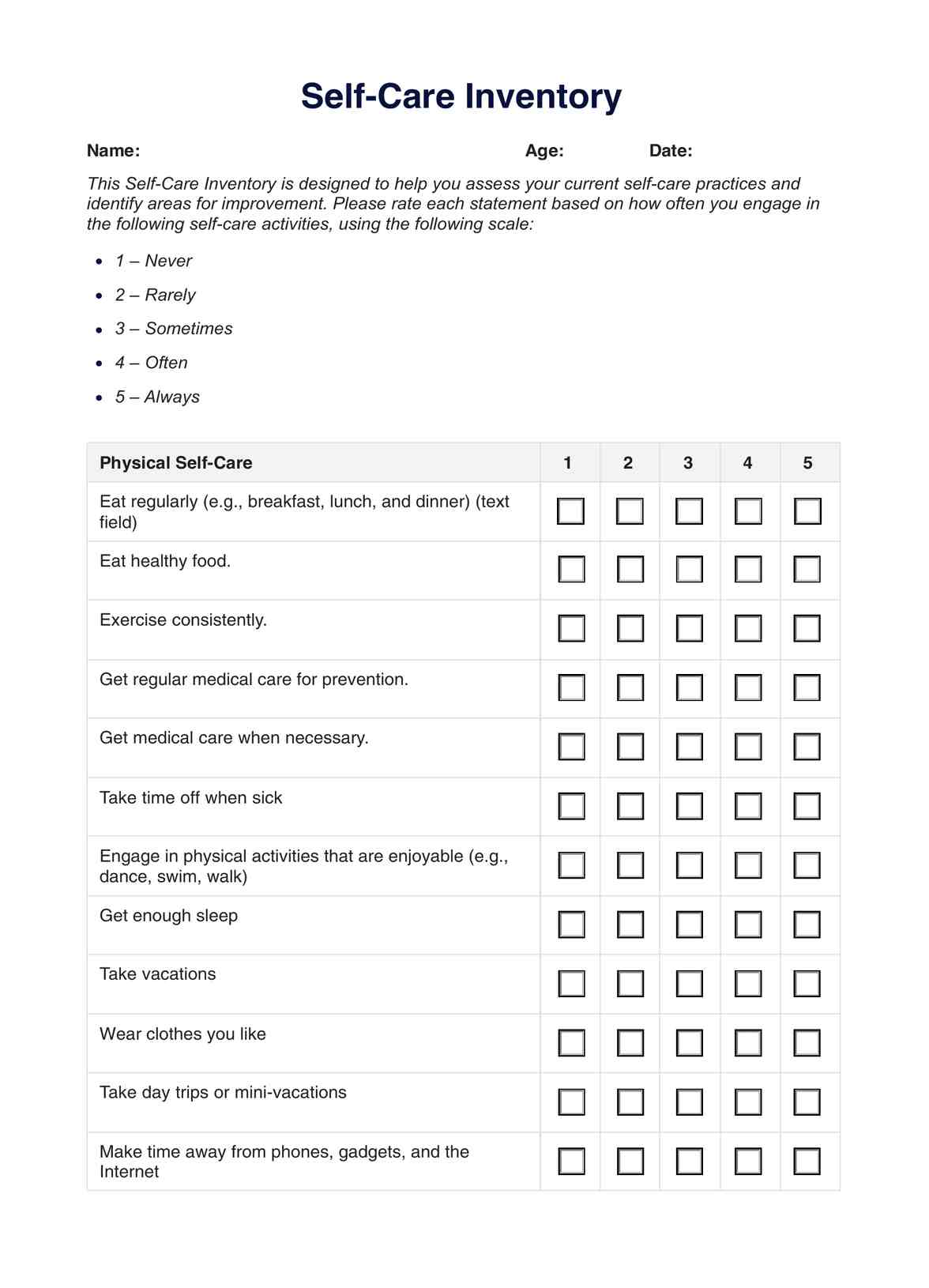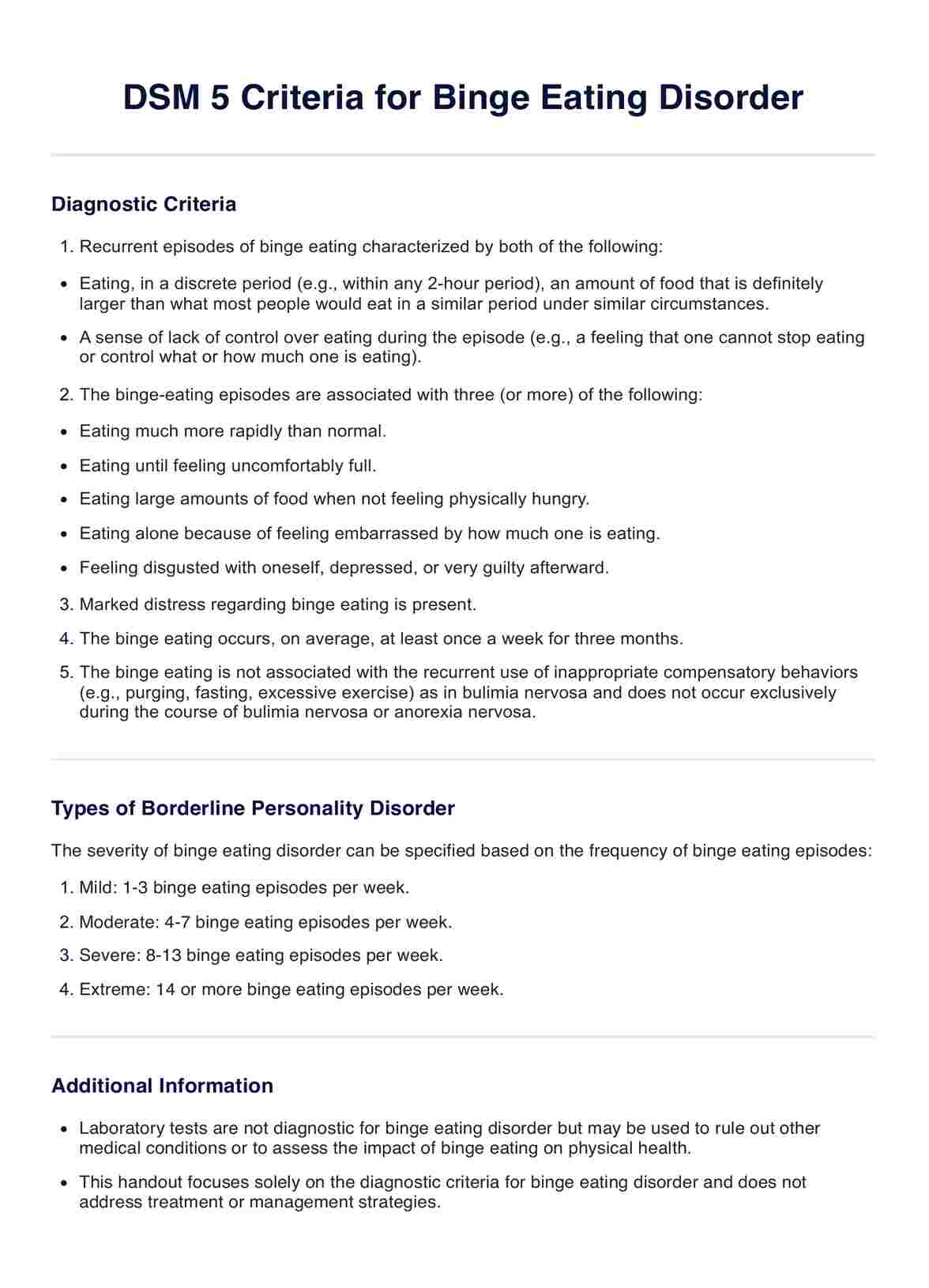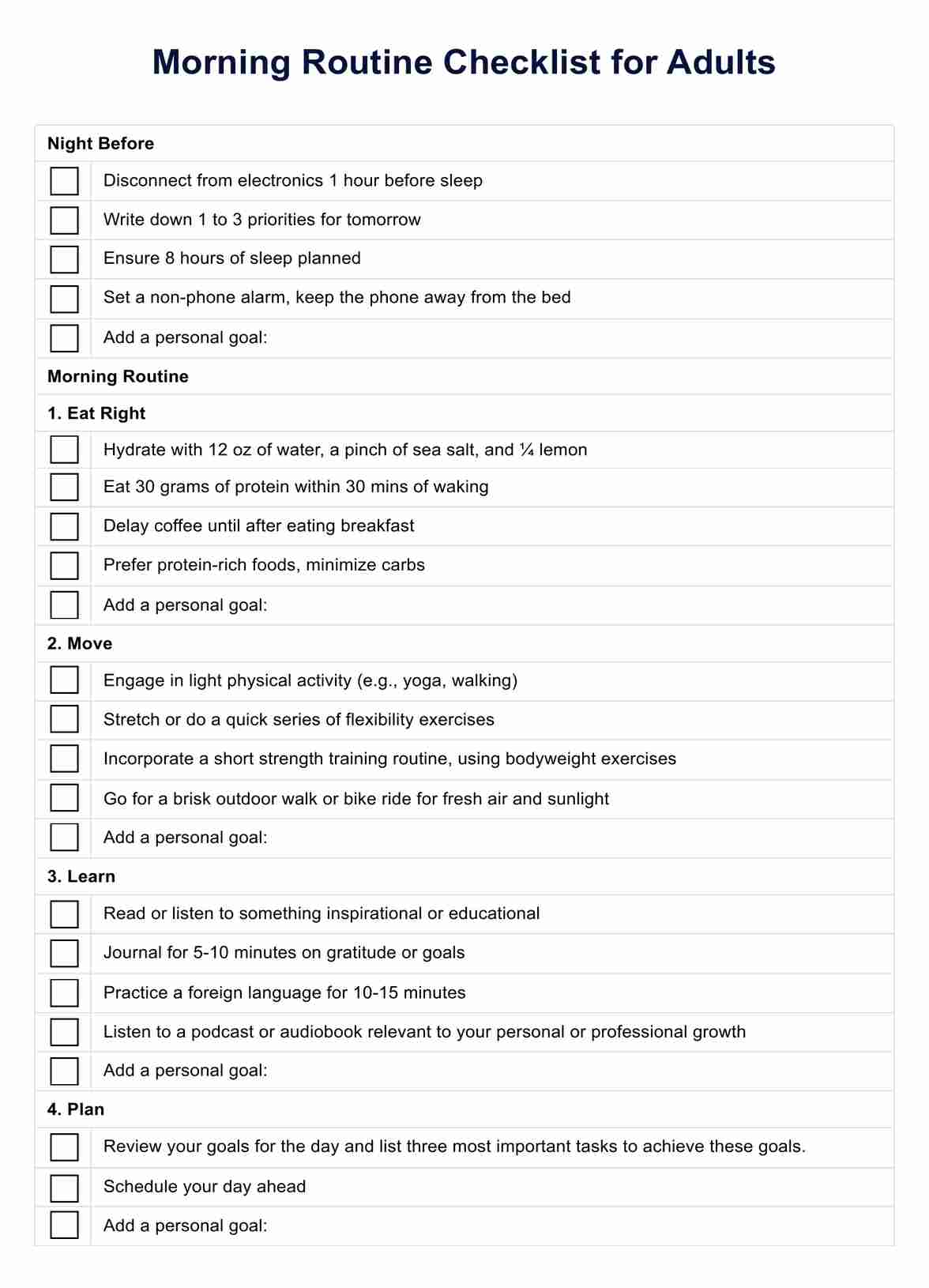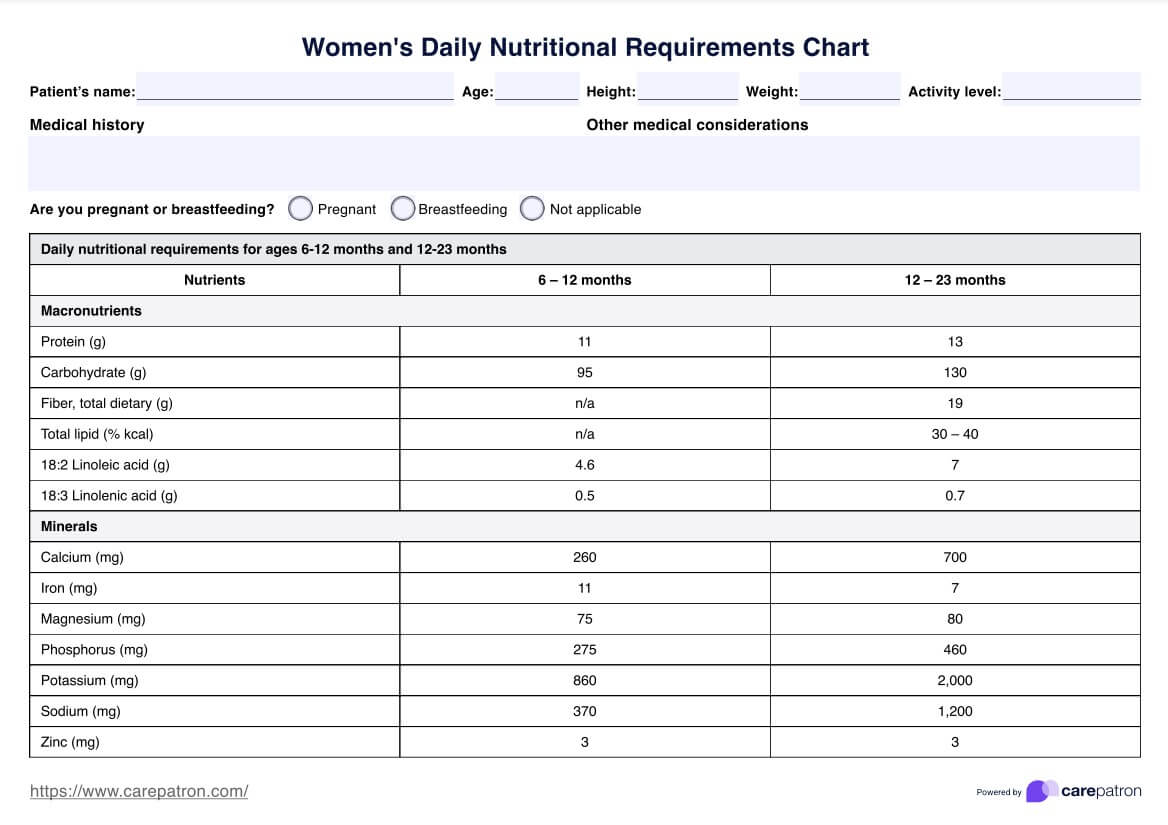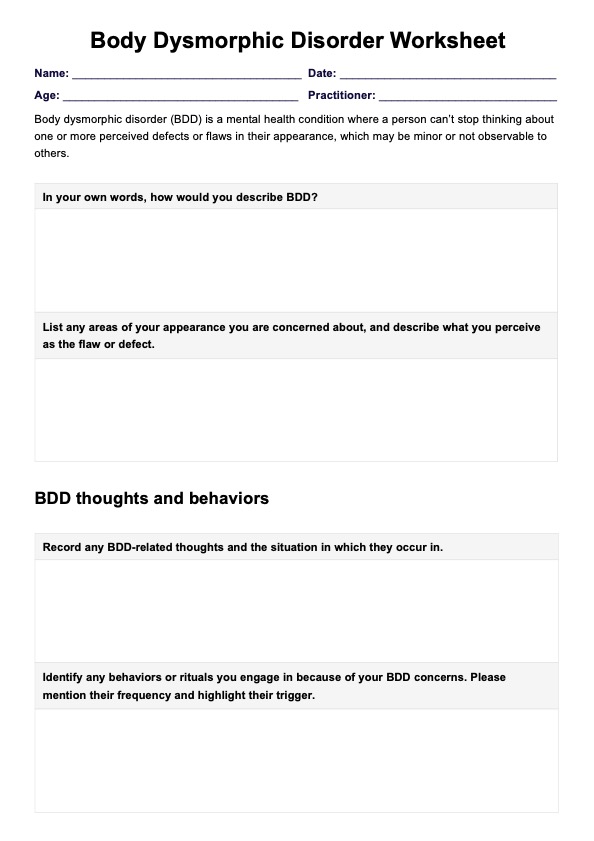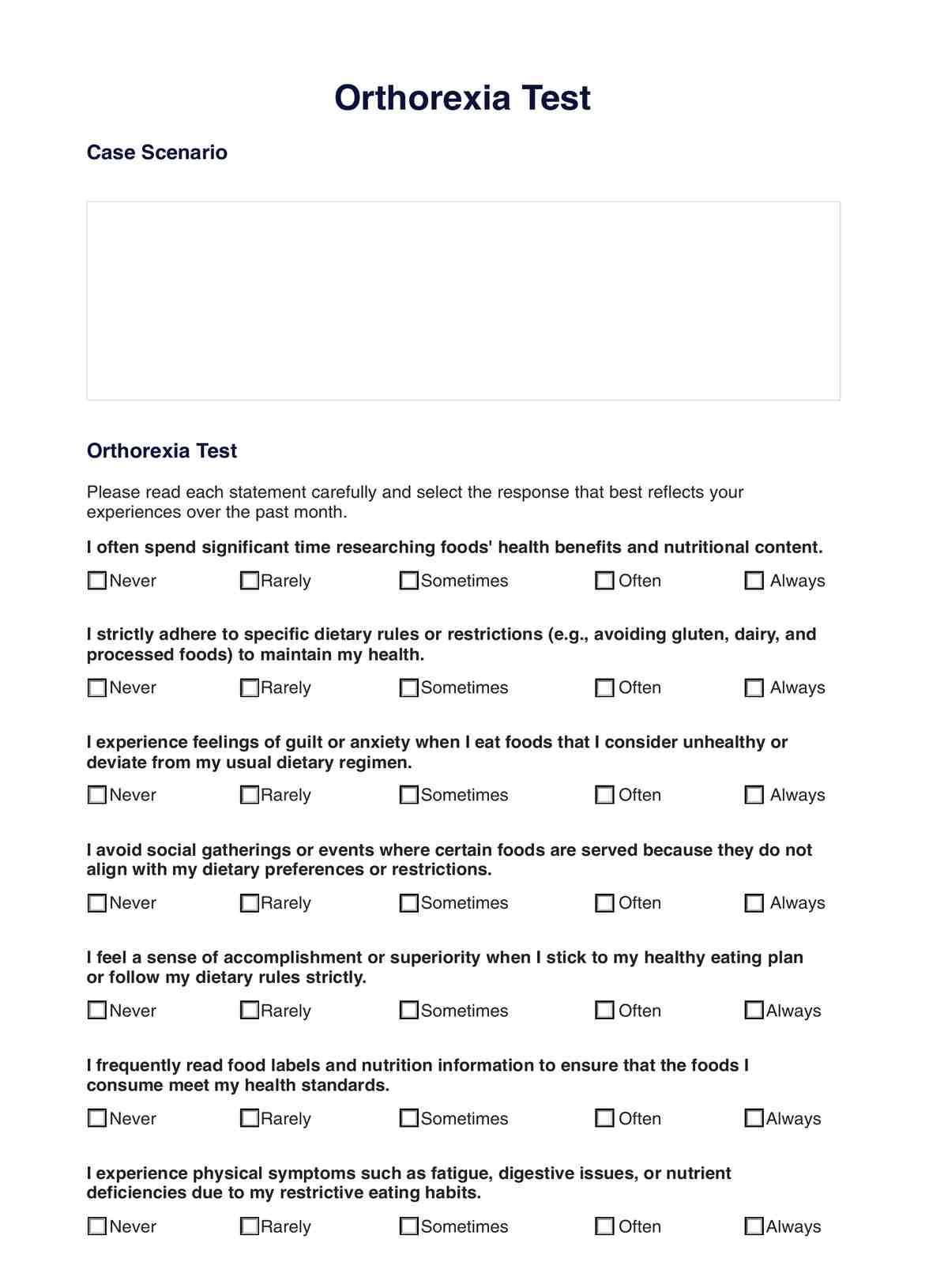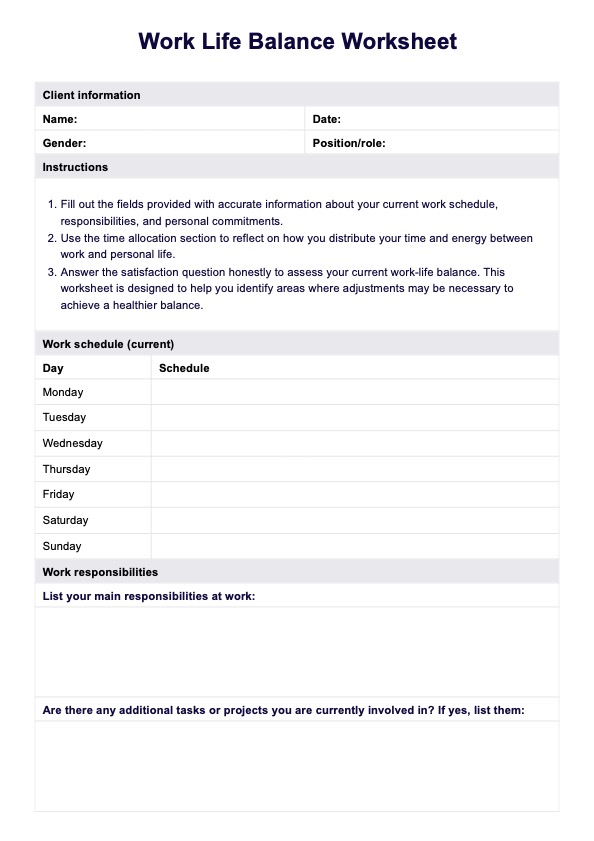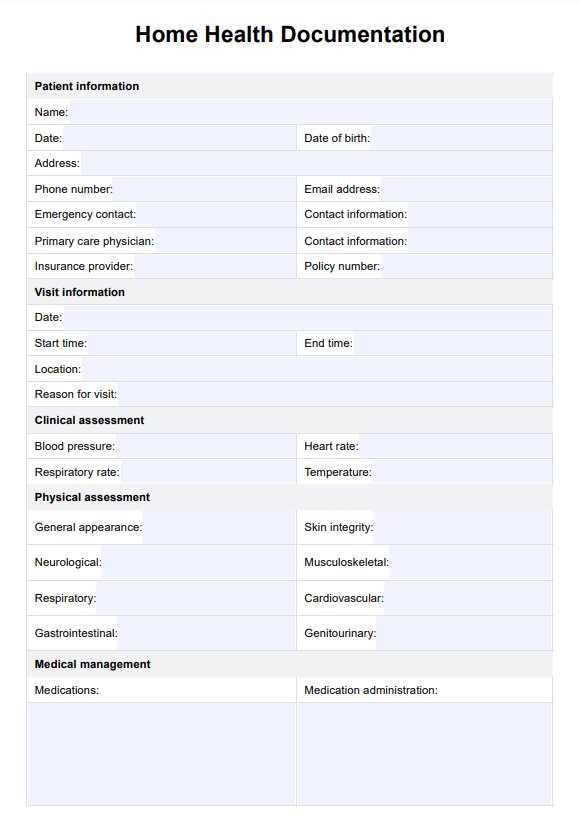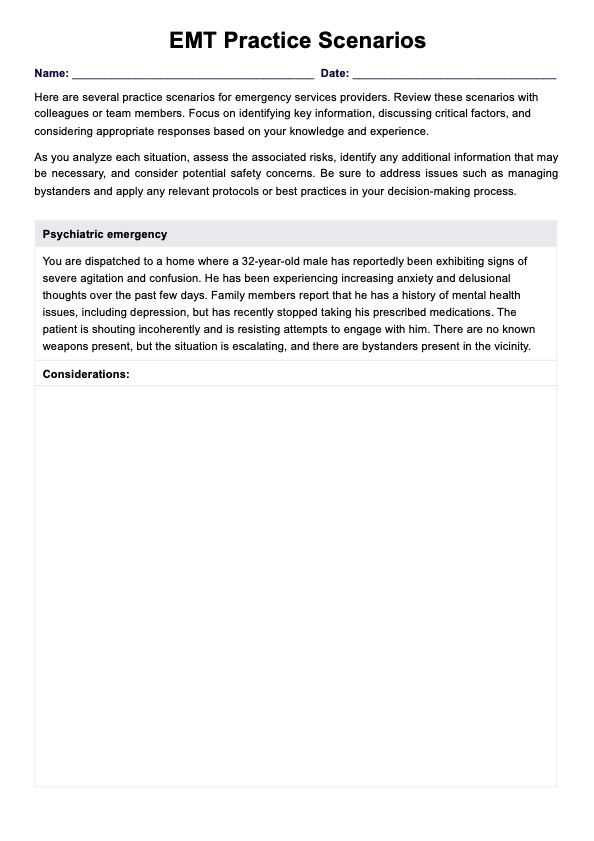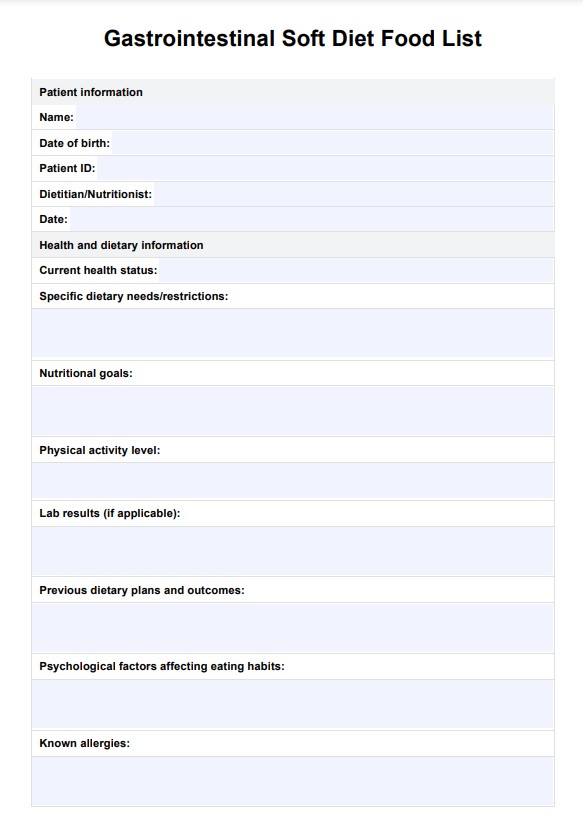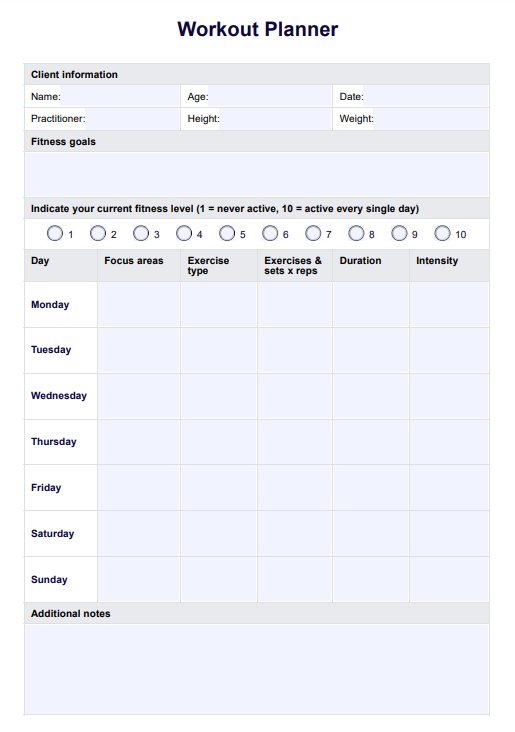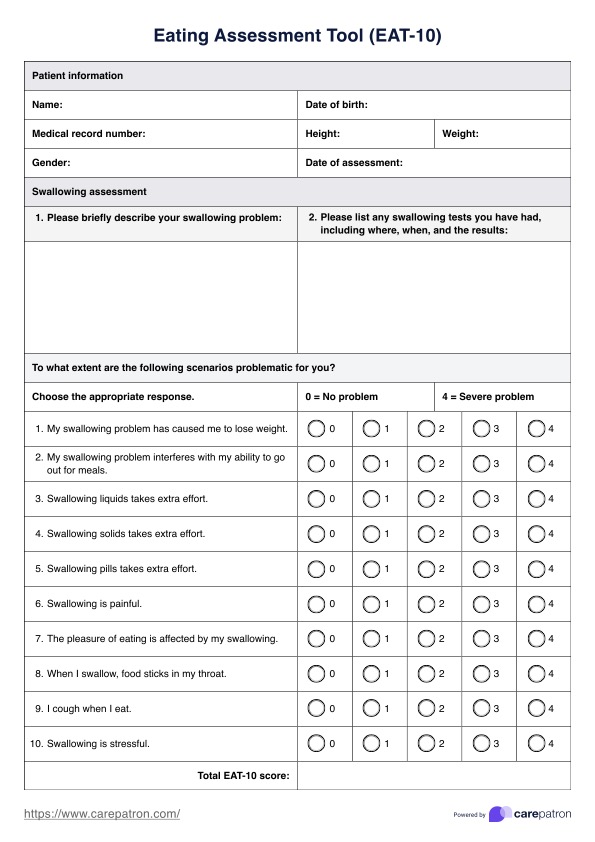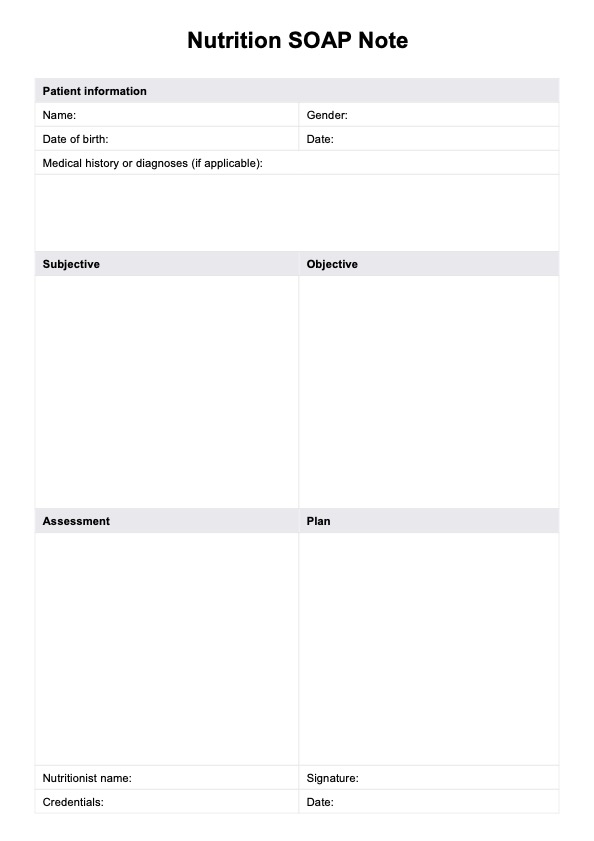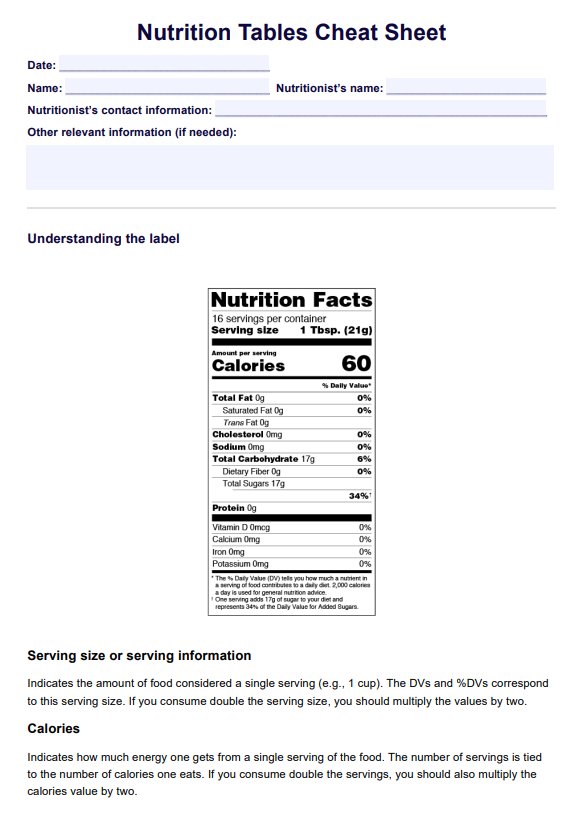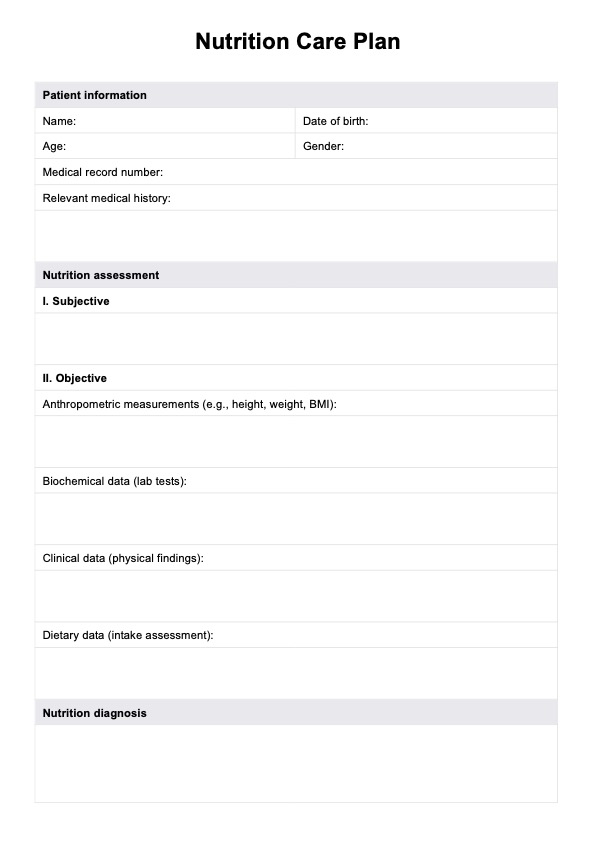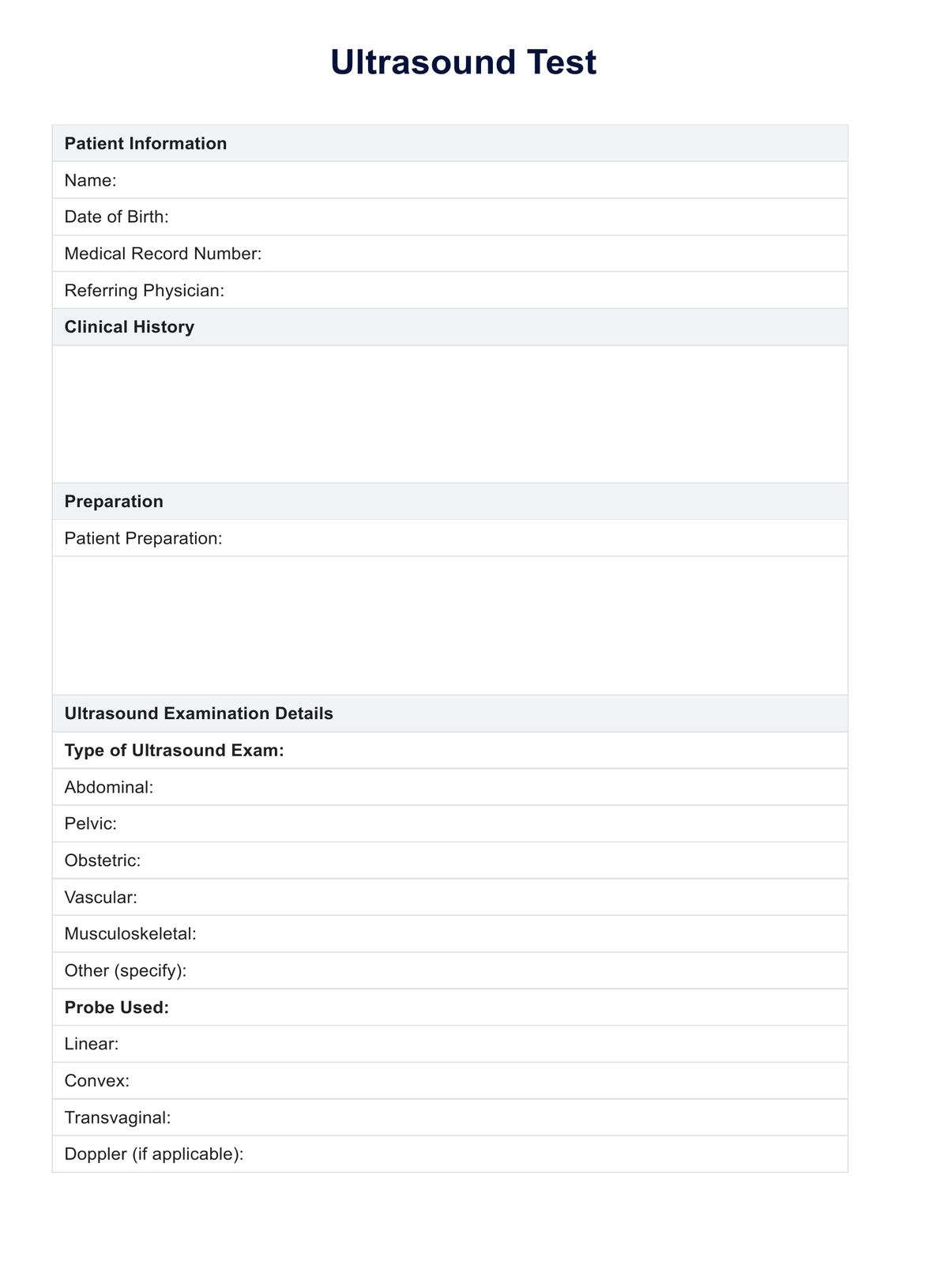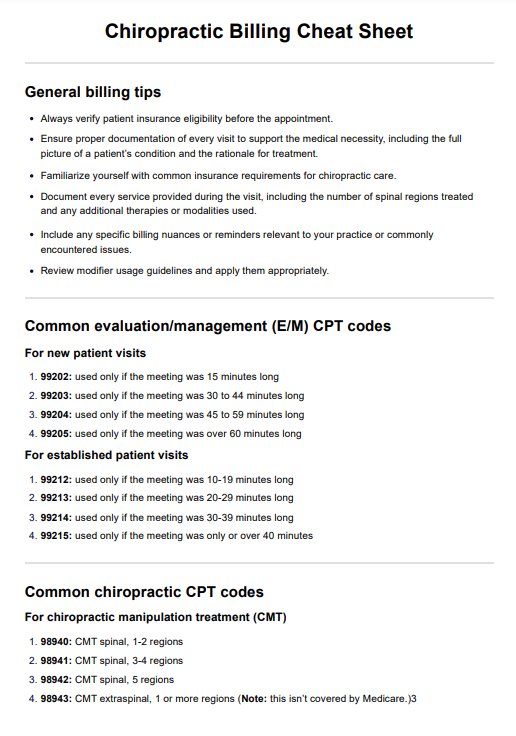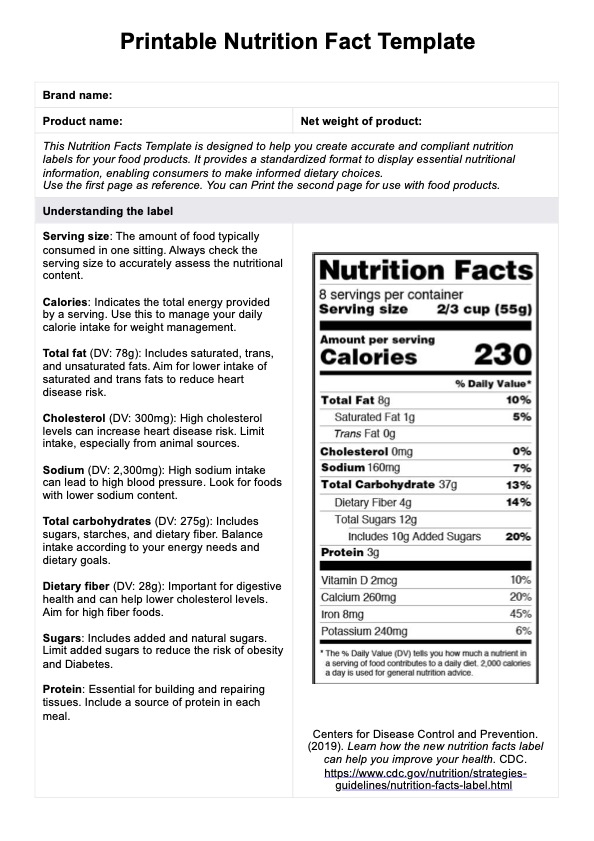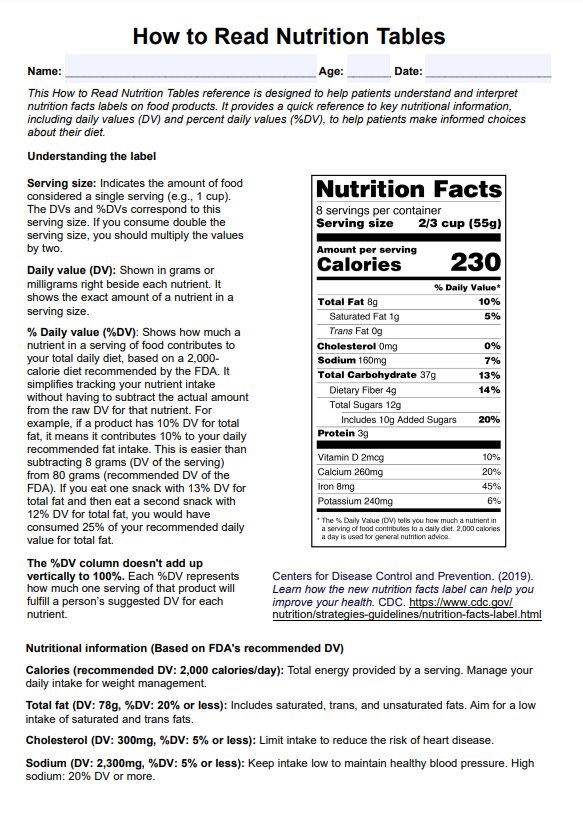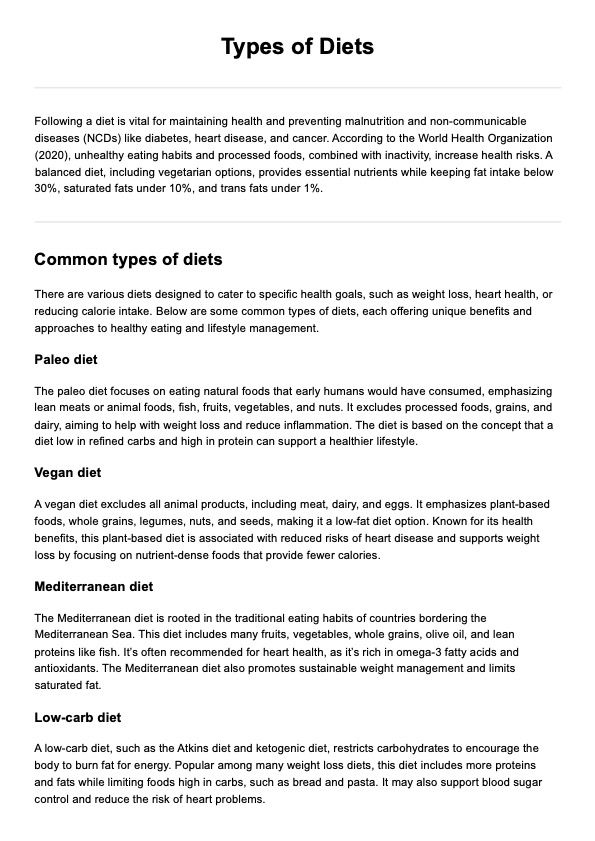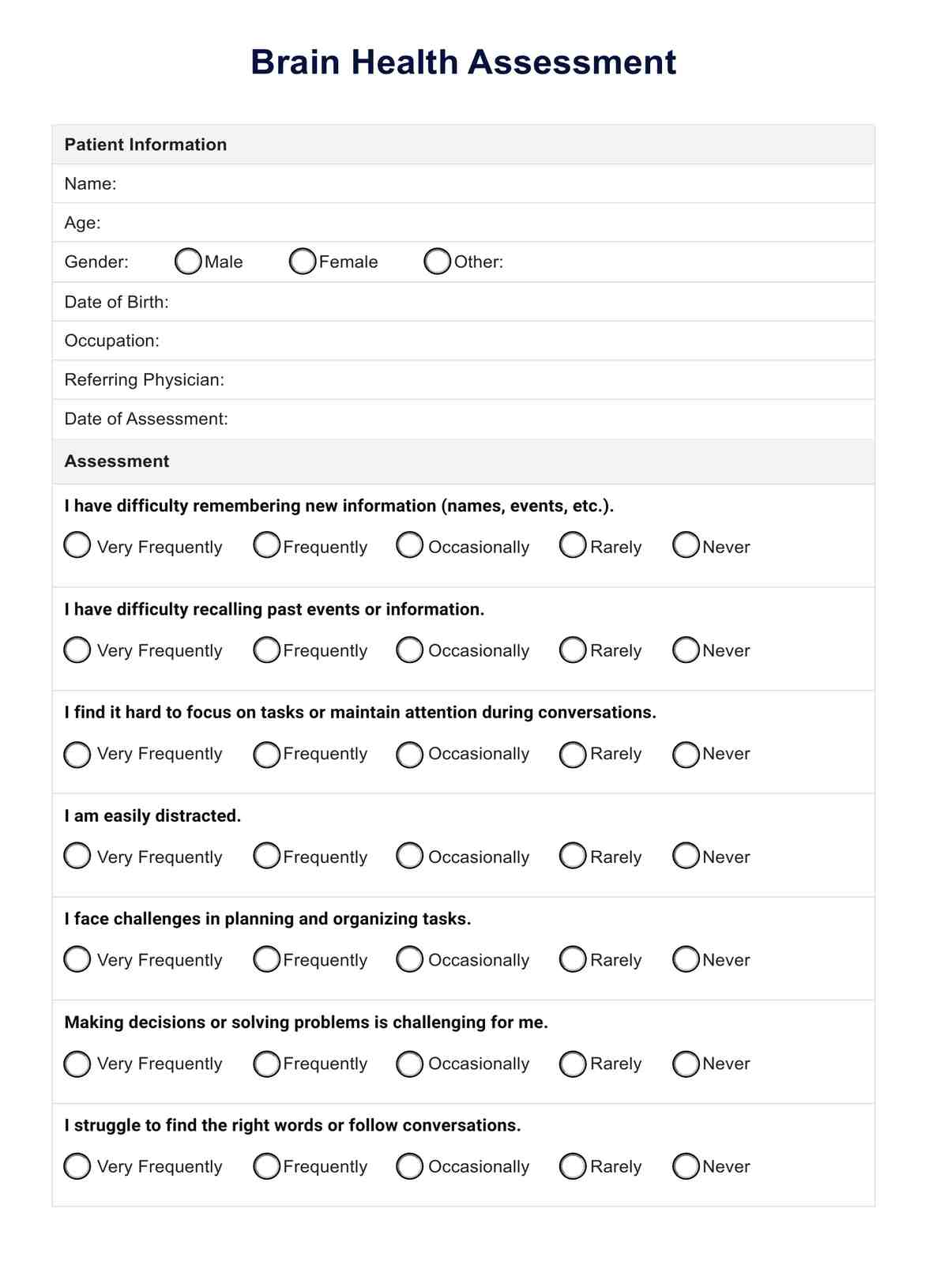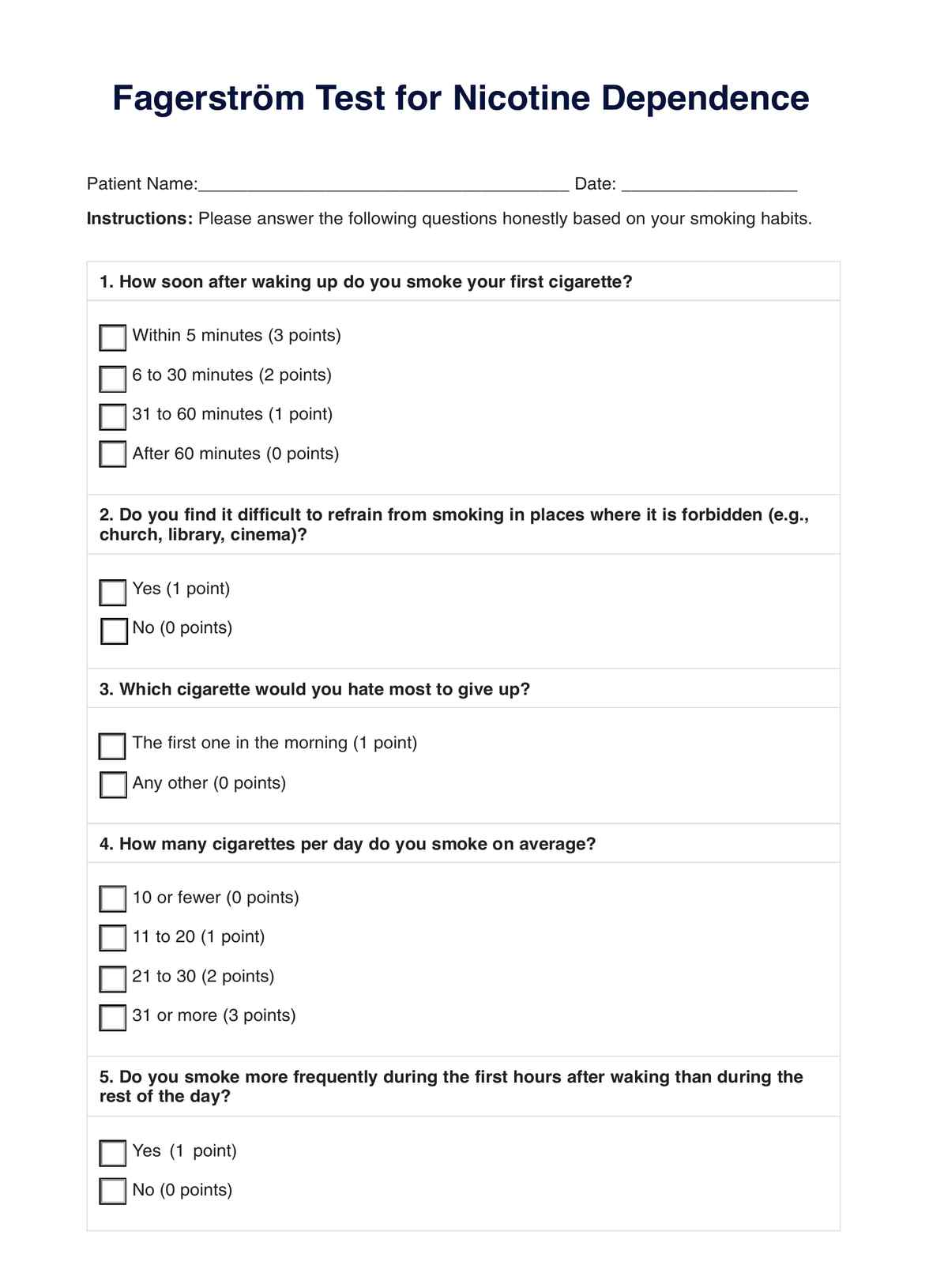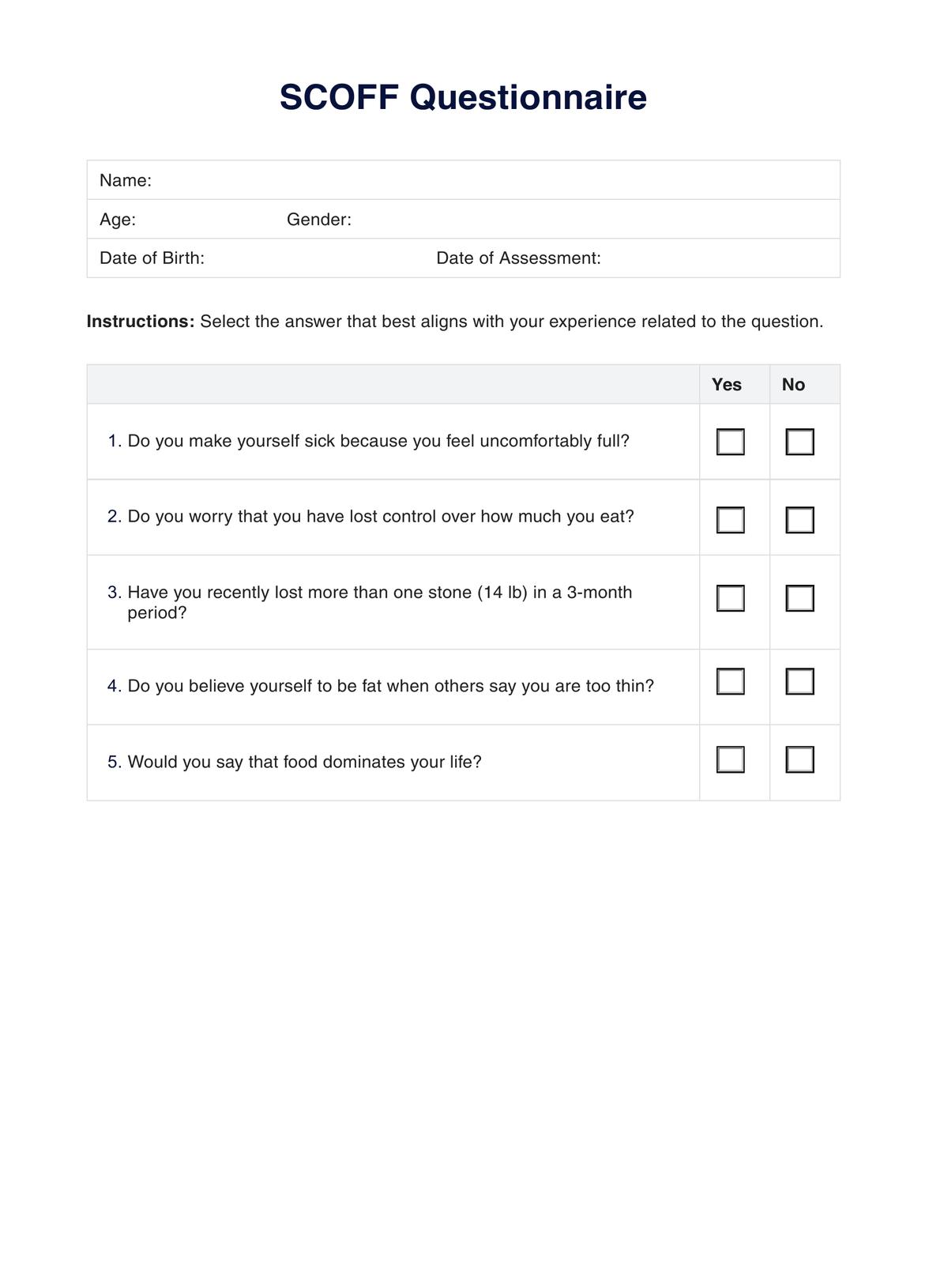Anti Inflammatory Diet Food List
Download our Anti-Inflammatory Diet Food List to help clients reduce inflammation, manage chronic diseases, and improve health with nutrient-rich food choices.


What is an Anti-Inflammatory Diet Food List?
An Anti-Inflammatory Diet Food List is a curated guide to foods and beverages that can help reduce inflammation in the body, supporting better health outcomes and reducing the risk and symptoms of conditions such as heart disease, arthritis, and diabetes.
Chronic inflammation, often caused by the consumption of highly processed foods and sugary drinks, can strain the immune system, leading to issues like bloating, joint pain, and increased vulnerability to chronic conditions. This list provides a selection of nutrient-rich, anti-inflammatory foods—including fruits, vegetables, whole grains, and healthy fats—to encourage healthier eating habits and long-term dietary improvements.
The list is not limited to a single food or beverage but instead emphasizes a variety of options that work together to promote an anti-inflammatory response. It aligns with dietary principles found in approaches like the Mediterranean diet, paleo diet, and keto diet, offering flexibility to suit diverse needs and preferences.
This resource is ideal for guiding individuals toward healthier choices, helping them create sustainable habits that reduce inflammation and support their overall well-being. It serves as a practical tool for fostering better dietary decisions and managing inflammation-related symptoms effectively.
Anti Inflammatory Diet Food List Template
Anti Inflammatory Diet Food List Example
How to use our Anti-Inflammatory Diet Food List?
Follow these steps to integrate the Anti-Inflammatory Food List into your practice effectively:
Step 1: Access the food list
The Anti-Inflammatory Food List is available as a customizable template within this guide. Click "Use template" to open it in the Carepatron app, where you can tailor it to fit the specific needs of your client. Alternatively, a fillable PDF version is also available—just click "Download."
Step 2: Introduce the food list
Before beginning, explain the purpose of the food list to your client. Highlight that it is a resource designed to help them identify foods that support an anti-inflammatory diet, guide meal planning, and align with their health goals. Emphasize that this is a flexible tool, and they can adapt it to fit their personal preferences and lifestyle.
Step 3: Guide through the sections
The food list is divided into key categories: whole grains, fruits, healthy fats, proteins, vegetables, herbs and spices, fermented foods, beverages, and other anti-inflammatory options. Encourage the client to review each category and identify foods they already enjoy, those they are curious about, or new items they would like to try. Use the "Additional Notes" section to document personal choices, barriers, or modifications.
Step 4: Encourage meal planning and reflection
As the client works with the food list, suggest they use it as a reference for meal planning. Discuss ways to combine foods from different categories to create balanced meals (e.g., pairing salmon with roasted vegetables and quinoa).
Step 5: Review and store the food list
Once the client has reviewed the list and noted their preferences, discuss their insights and goals. Encourage them to revisit the list periodically to track their progress and make adjustments as needed.
Benefits of using our Anti-Inflammatory Food List template?
Using this template in your practice comes with many benefits. Take a look:
Provides a clear and practical framework
The Anti-Inflammatory Food List offers a structured and easy-to-follow guide that simplifies dietary advice. Its categorization into food groups—such as whole grains, fruits, and healthy fats—helps clients clearly understand what foods to prioritize and avoid. This practical framework ensures consistency and clarity in nutritional guidance, making it easier for clients to implement dietary changes.
Enhances personalization of nutritional advice
The list's customizable format allows professionals to tailor dietary recommendations to each client’s unique needs. Whether a client has dietary restrictions (e.g., gluten-free or vegetarian), cultural preferences, or specific health goals, the list can be adjusted to align with their lifestyle. This personalized approach increases the relevance of the advice, boosting client engagement and adherence.
Supports management of inflammation-related conditions
Chronic inflammation is linked to various health issues, such as autoimmune diseases, cardiovascular problems, and joint pain. The list equips professionals with a tool to help clients combat inflammation through diet, complementing medical or therapeutic interventions. By focusing on anti-inflammatory foods, clients can experience improvements in symptoms and overall health.
Encourages active client participation and accountability
The interactive nature of the list fosters active involvement from clients. By identifying preferred foods, noting barriers, and setting goals, clients take ownership of their dietary habits. This participatory approach not only builds a sense of accountability but also empowers clients to make informed, sustainable choices.
Apart from these benefits, using this template on the Carepatron app also lets you access all the features and functionality that our free app has to offer—like patient data management, automated reminders, telehealth features, and HIPAA-compliant data security. Register today to try it.
Commonly asked questions
An anti-inflammatory food list is a resource designed to guide individuals toward foods that help reduce inflammation and promote overall health. It emphasizes nutrient-rich options like whole grains, fatty fish, dark leafy greens, and healthy oils such as olive oil, which contain protective compounds known for their anti-inflammatory properties. The list also identifies inflammatory foods, including processed meats, refined grains, and fried foods, which can increase the risk of conditions like heart disease and chronic pain.
An anti-inflammatory diet improves health by reducing the body’s inflammatory response, which plays a crucial role in managing chronic diseases such as rheumatoid arthritis, cardiovascular disease, and autoimmune diseases. By emphasizing anti-inflammatory foods rich in vitamin C, vitamin E, and anti-inflammatory compounds like omega-3 fatty acids, individuals can enhance immune system function, stabilize blood sugar levels, lower blood pressure, and reduce acute inflammation.
Key anti-inflammatory foods to include are fatty fish for omega-3 fatty acids, whole foods such as fruits, vegetables, and fresh herbs, and healthy fats like nut butter and avocado. Foods to avoid include processed foods, fast food, sugar-sweetened beverages, red meat, and trans fats. Incorporating more anti-inflammatory foods into daily meals can help reduce inflammation and contribute to a healthier diet.
Diets such as the Mediterranean diet, DASH diet, and MIND diet are recognized for their anti-inflammatory effects. These dietary approaches focus on whole foods, healthy fats, and nutrient-dense options that reduce chronic inflammation, support the gut microbiota, and lower the risk of conditions like Alzheimer’s disease and other inflammatory diseases. Adopting these healthy diet principles can result in significant health benefits over time.


